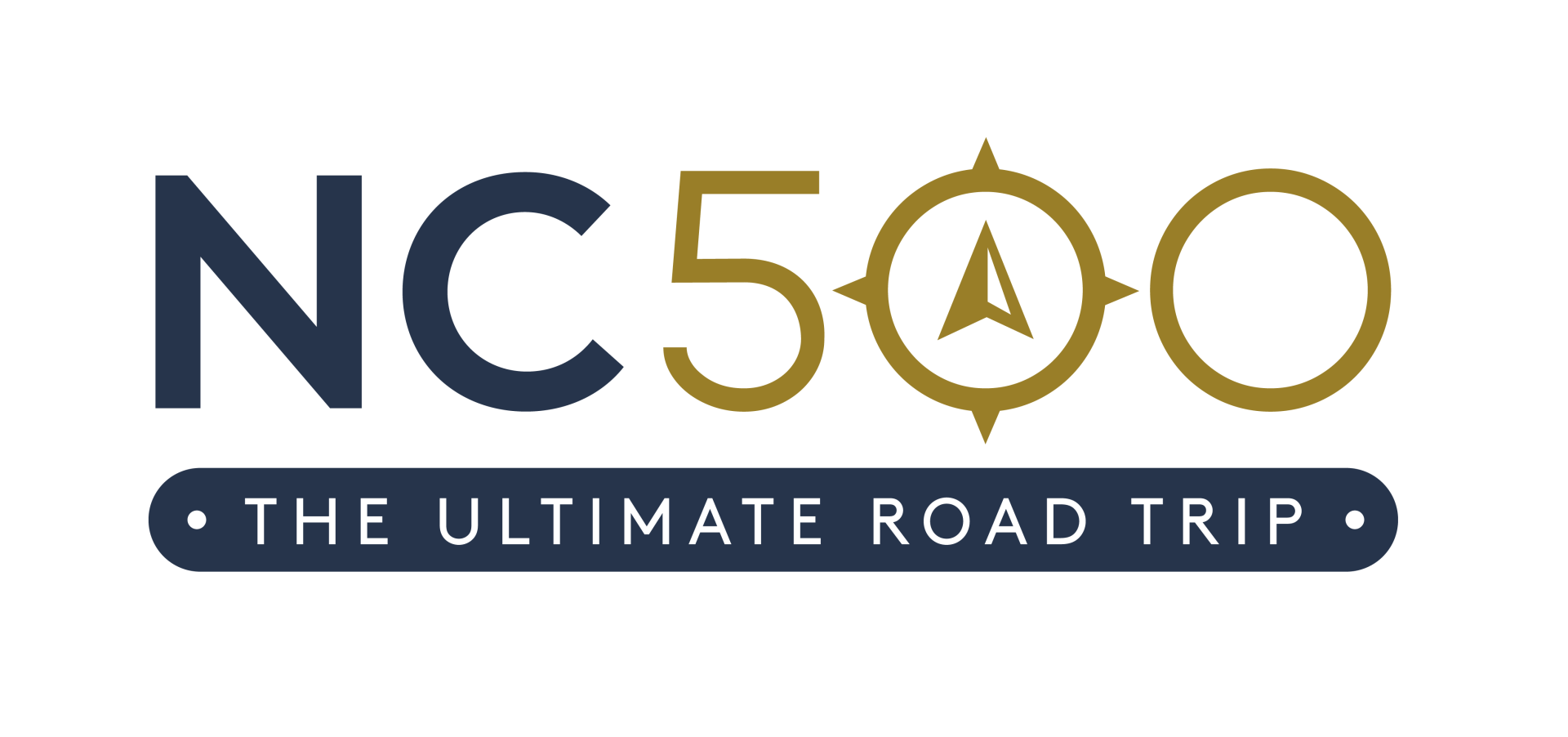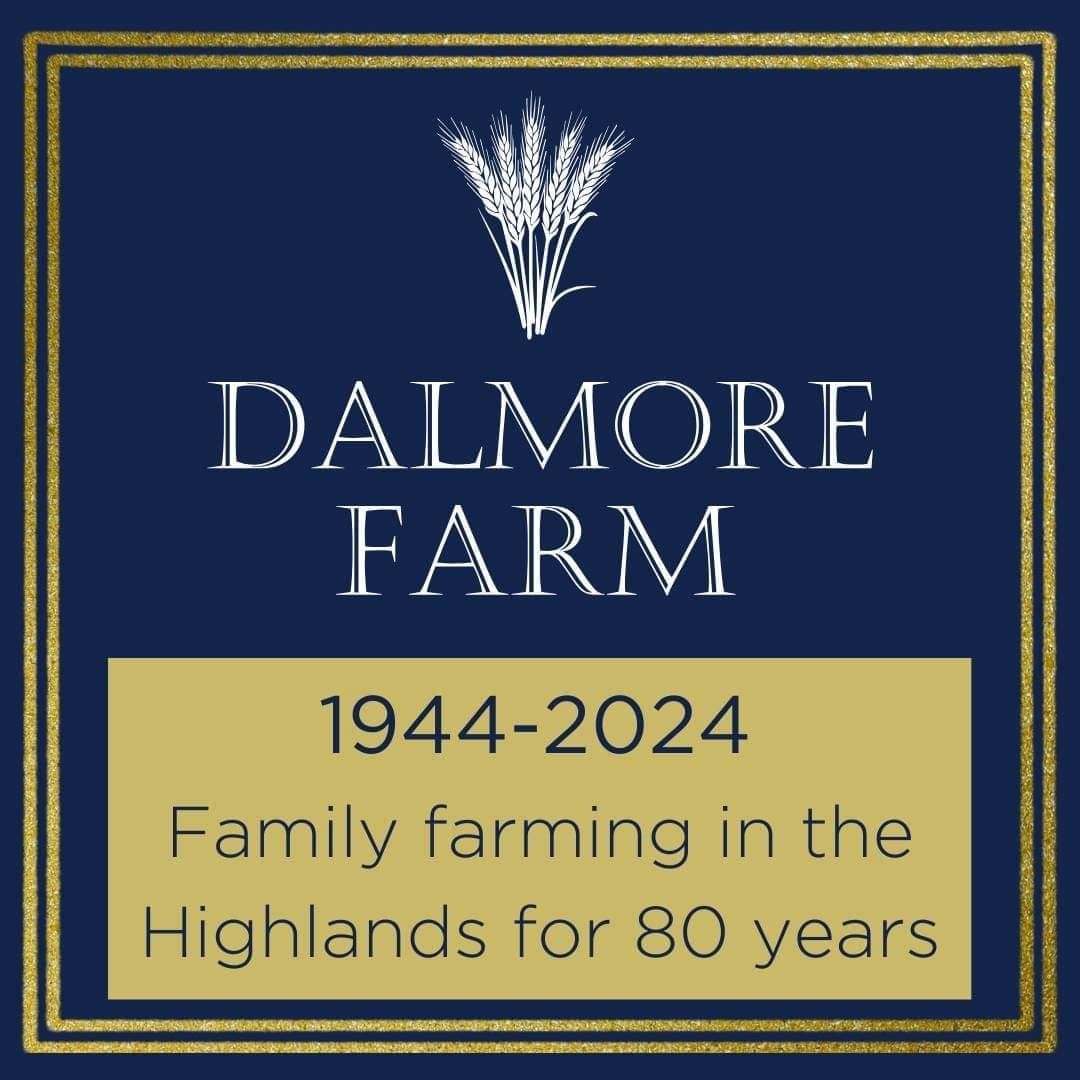
1944 - 2024
On 28th May 2024, our family celebrated having lived and worked at Dalmore for 80 years.
Each week from January through to May, we shared our history and information about our family's life over this time.
We have lots of pictures through the years along with details of what life was like prior to 1944.
DALMORE FARM HISTORY: WEEK 1
28.01.2024
Catherine Begg married William Oag and in their early married life lived at Clatequoy Farm, near Halkirk in Caithness. At Clatequoy, they started their North Country Cheviot Sheep Flock in 1926 for which the Oag family - and subsequently Dalmore Farm - would become well known for. Here, they brought up their oldest children David, Hugh, Sheena and Sheila.
Having had advice from the doctor that for Catherine’s health reasons they should move south, they started looking for a new farm. They saw an advert in the local paper and following this up with the particulars, and a viewing, bought Dalmore Farm.
The farm move was to take place at the term time 28th May 1944. At this time, the only way to move home was to use the railway. The entire family's possessions, equipment, carts and most importantly the pedigree flock, along with their cattle and horses were loaded at Halkirk station and travelled south. Arriving at Alness they unloaded everything and walked the animals and all equipment to their new home here at Dalmore.
Having time to settle into the farm, Willie and Cathy very quickly established themselves as part of the local farming community and began making improvements to their new home.
One of the first projects was the new milking byre where they would milk their herd of 26 Ayrshire cows. Taking their knowledge from Caithness, they had large slabs of Caithness slate sent south to floor the new stalls, this was for the comfort of the cows. Another important improvement was to install full bathrooms in the workers cottages replacing the outside toilets.
Having settled well into the community, two years after their move to Dalmore, their fifth child Alistair was born.
Willie and Cathy worked extremely hard to make their new venture flourish. Cathy reared and sold all types of poultry as well as selling their fresh eggs, milk, cream and butter. The milk from Dalmore was delivered daily to Toni’s Ice Cream Shop in the high street where they made the famous - and totally delicious - ice cream using their Italian family recipe.
The work ethic they had, and their attention to detail, along with always trying to achieve the highest standards have stood all of us here at Dalmore in good stead. Cathie's early entrepreneurship locally has been cascaded down through the generations and is reflected in the success of our Farm Shop today.
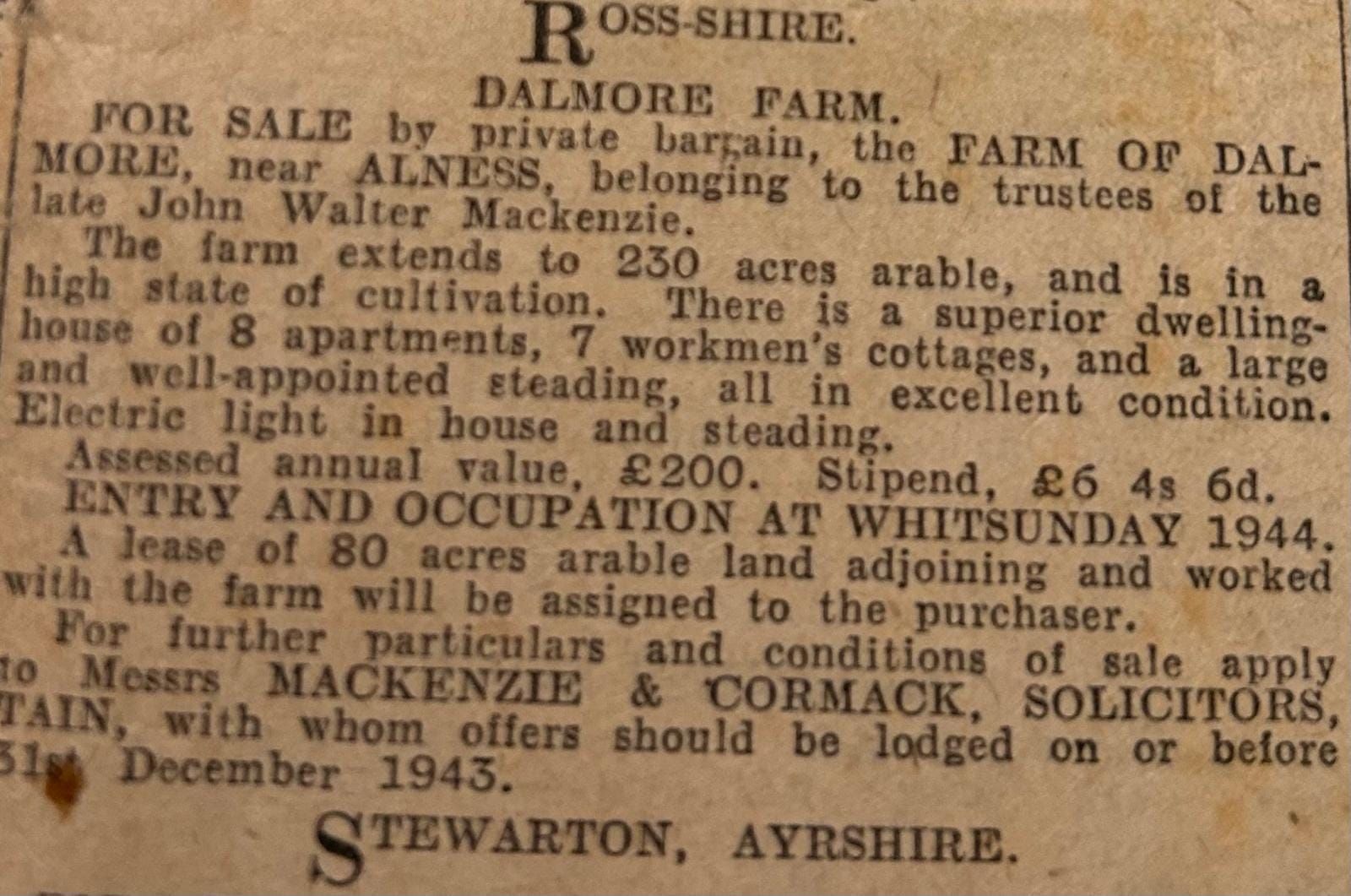
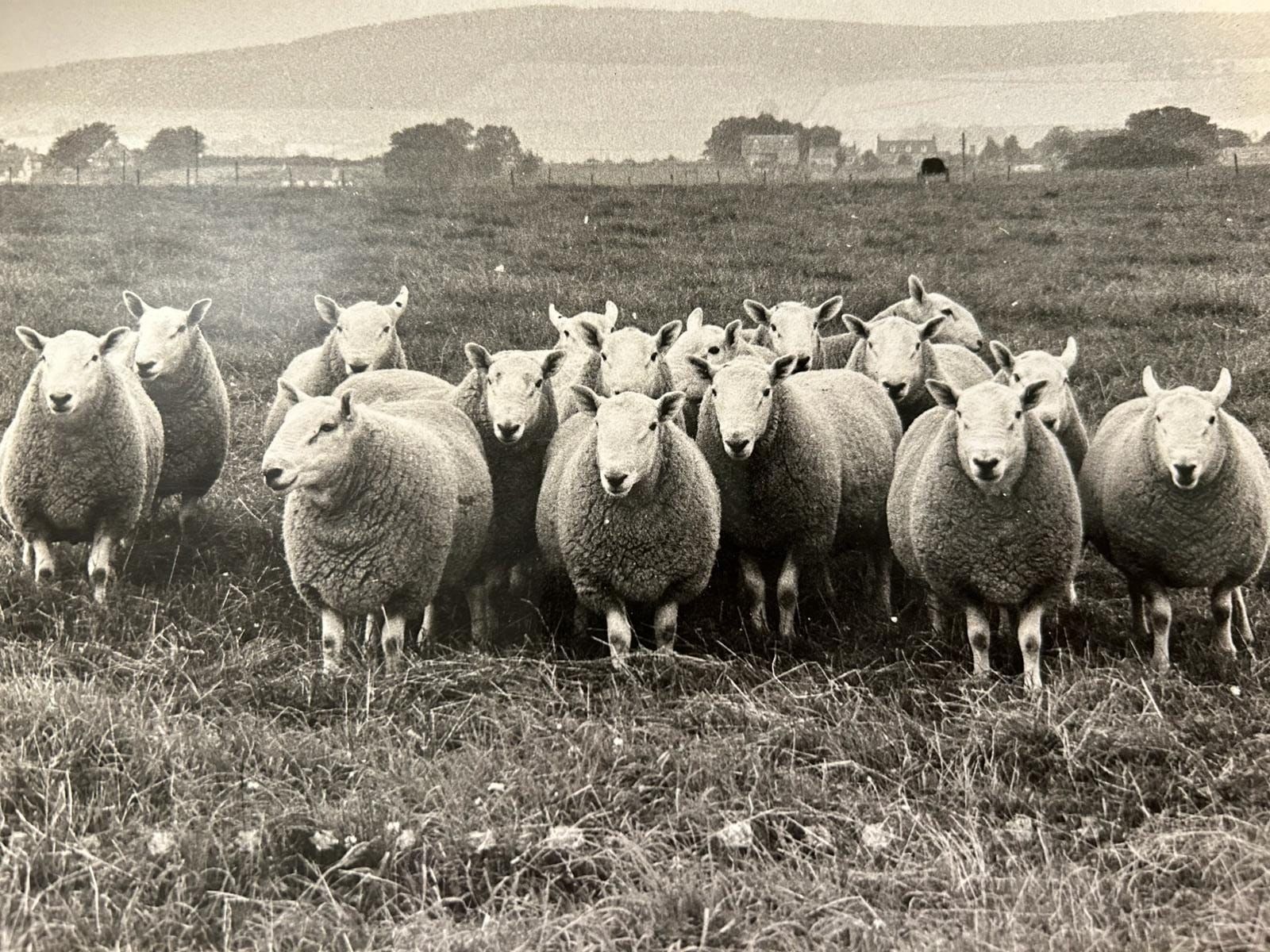
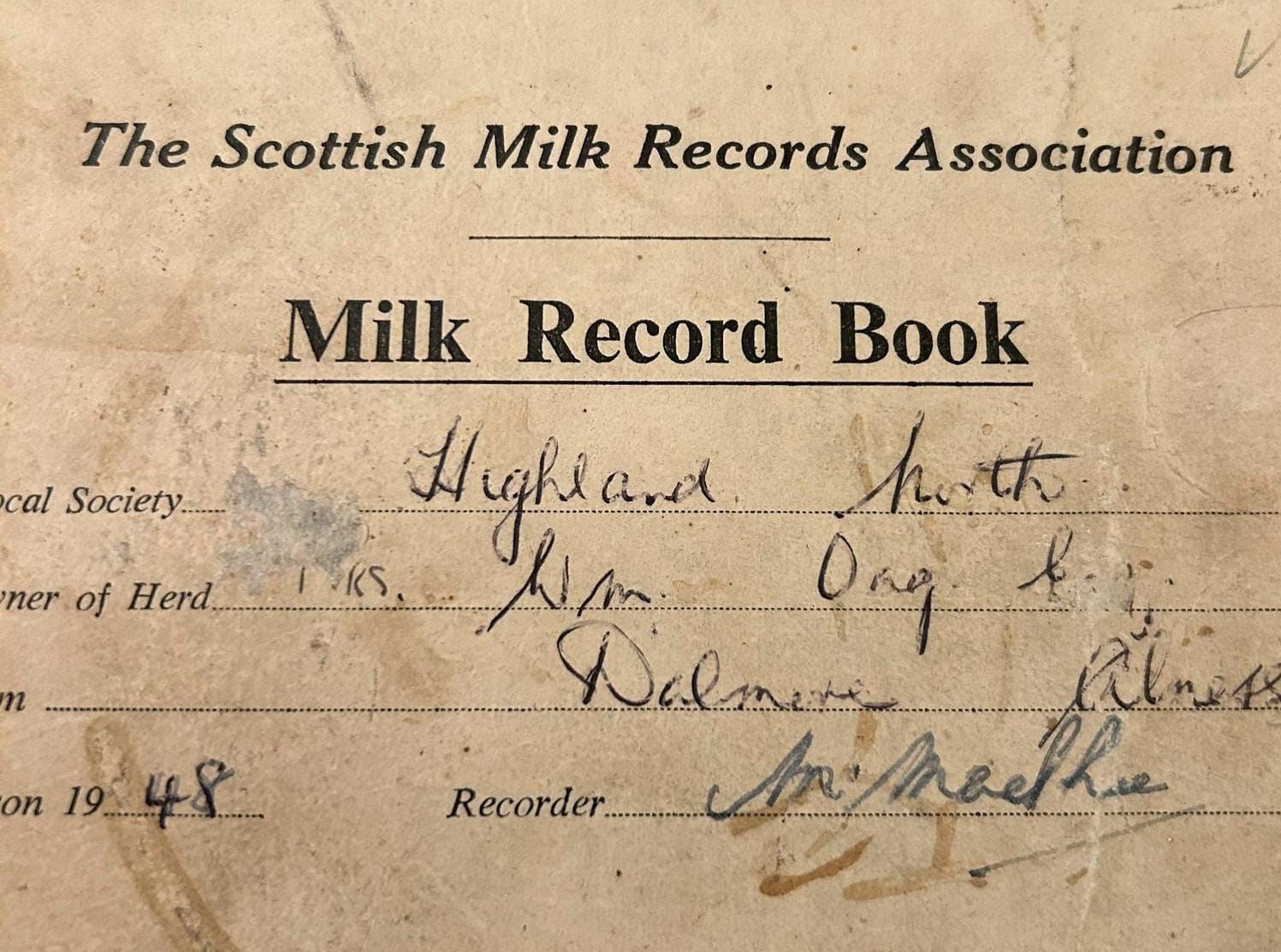
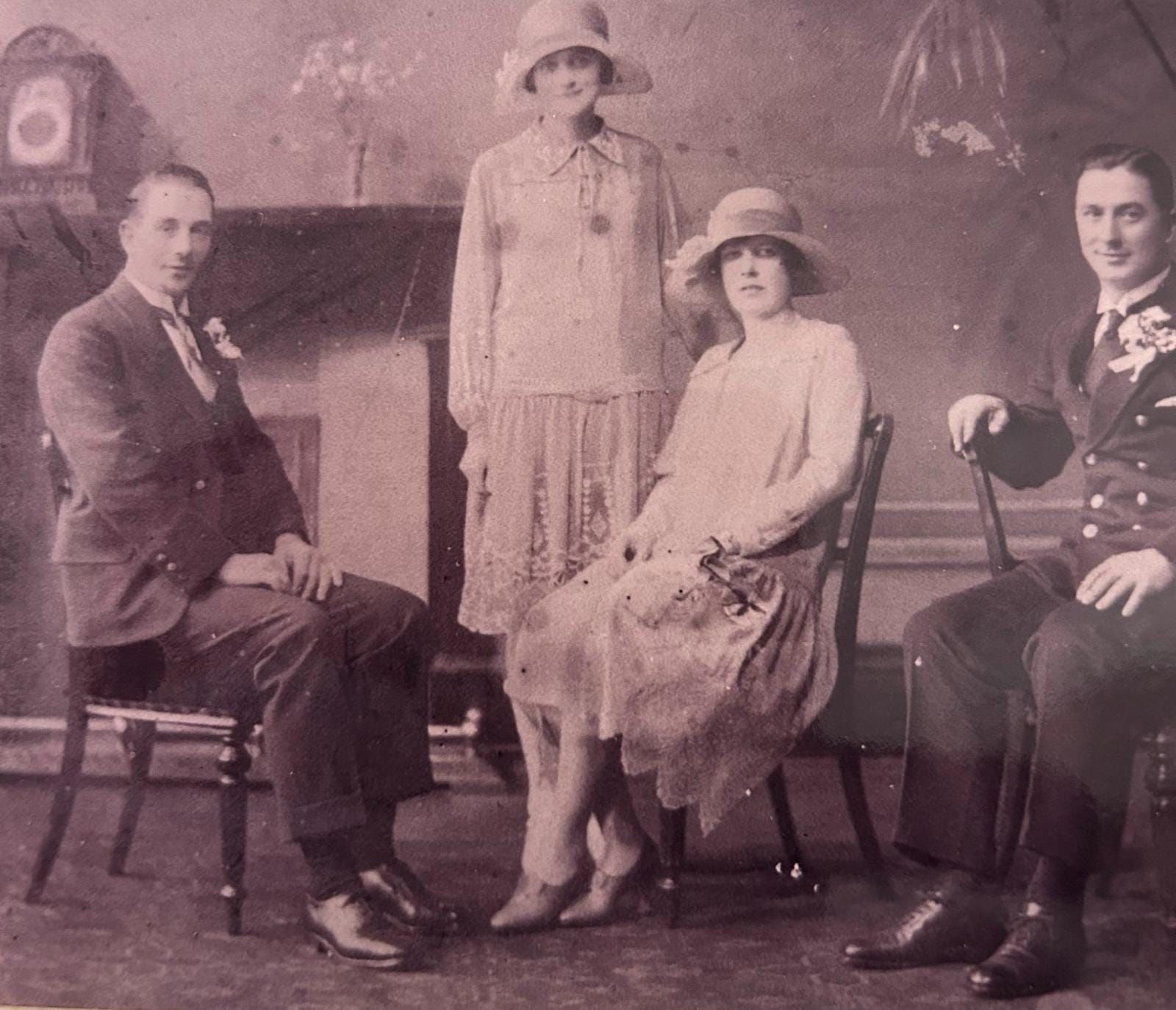
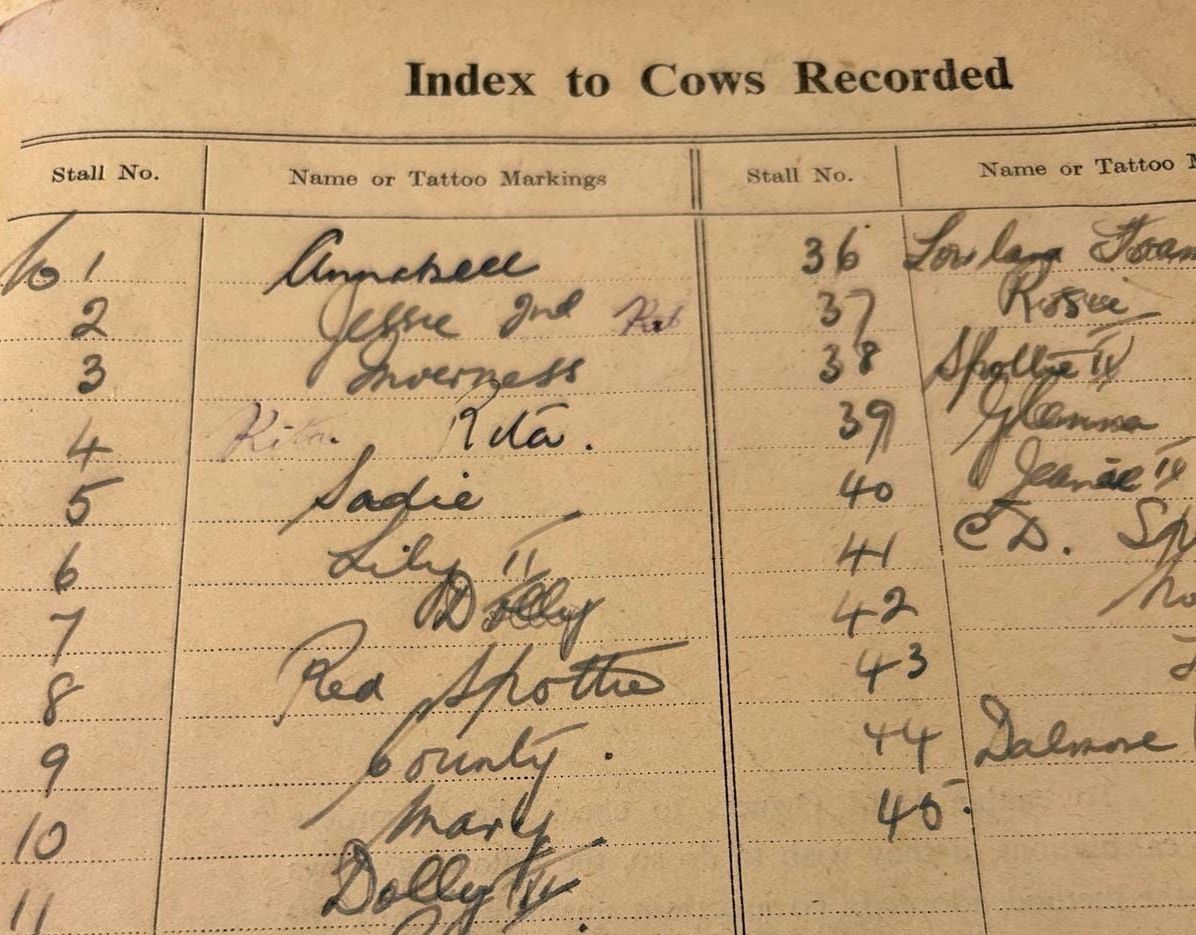
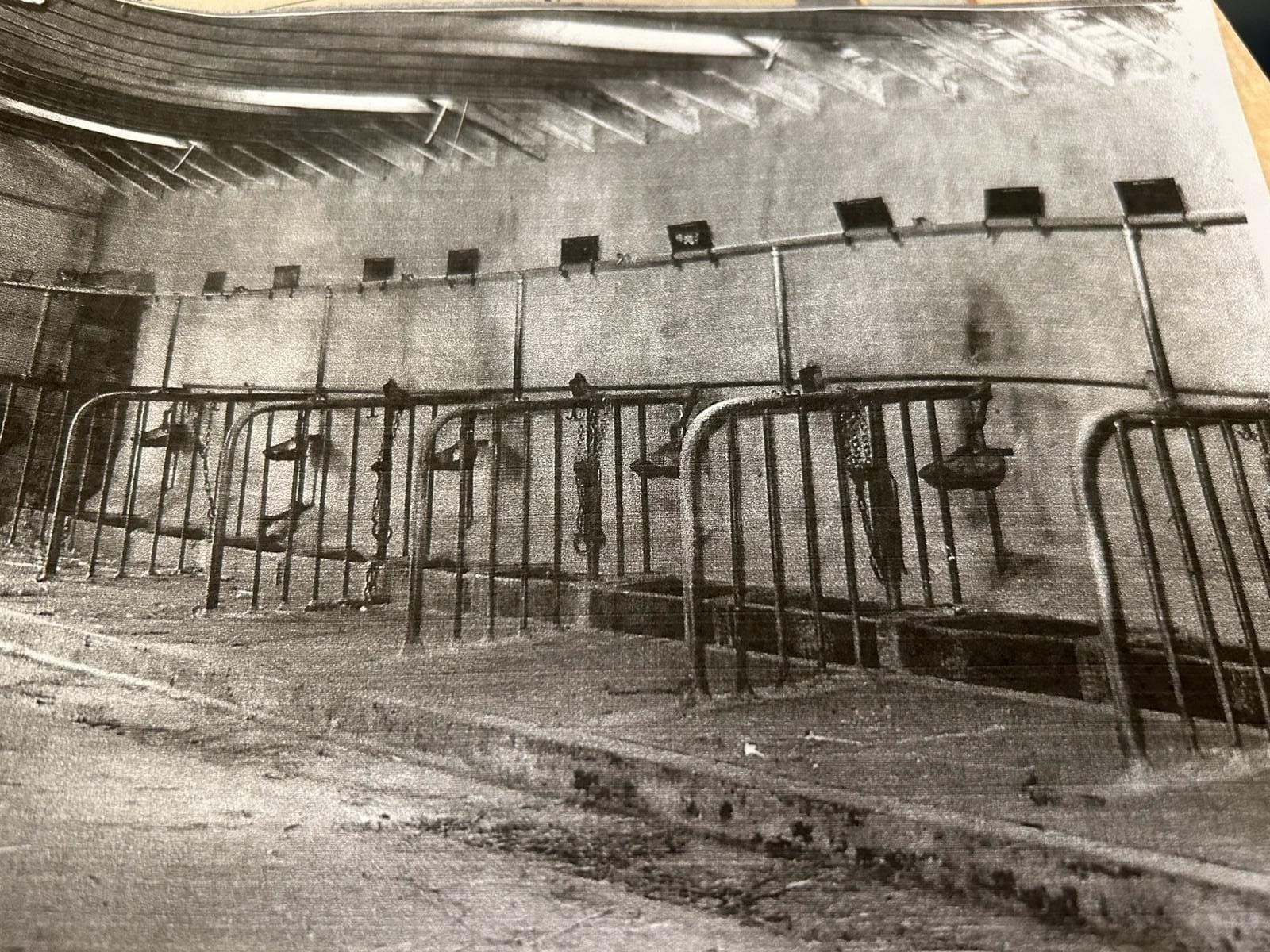
DALMORE FARM HISTORY: WEEK 2
04.02.2024
Having just moved to Dalmore, David Oag (age 14) spoke to the late Doreen Patience for a local newspaper:
“When we left Caithness in 1944, and arrived it was a completely different new world. For a start there were no trees and the land was so flat in Caithness. It was totally different. I went to school in Invergordon and I can remember on my first day there, the boys all laughed at me. I couldn’t understand why, but it was six months later that I had the occasion to make a trip back to Caithness with my father to a farm sale and I stood and listened, I couldn’t help but smile I had not realised the difference in the dialect between Caithness and Easter Ross”
It was always a laugh when David was on the phone to someone from Caithness how quickly he slipped back to his speaking his Caithness tongue!
1944:
The staff who worked on the farm at that time were:
The Grieve: Kenny Gordon
Dairy Cattle: Mr and Mrs Henderson
Fattening cattle: Barbara Henderson
General workers: Norman Macdonald, Sanders Gordon, Jock, Charlie and Will Davidson
Shepherd: Jock Pirie
Horseman: Har Sutherland
Dairy: Donald and Mrs Lawrie and their daughter Annie Lawrie
Dairy/general: Annie Macdonald
At the time of moving to the farm in 1944, the work was very labour intensive, hugely different to today. Much of the cultivation work was done by horses and a great deal of back breaking work done by the farm labourers. The men working with the horses had a long day. We talk today about a 37-40 hour full time week. In harvest, that would have been equivalent to 2 and a half of their working days. They would start at 6am and work until dark. Grandad Willie Oag was always very proud of the stacks they made at Dalmore Farm. The stack yard was a sight to behold. People used to travel on a Sunday to come and look at the wonderful job they had made. It has to be remembered that whilst the men built the stacks in their working time, the tidying up and cross roping, along with netting was done in their own time at night to perfect their work. There was no overtime for this, however they were very proud of their work.
Just two days after the move from Caithness there was another new arrival, George Pirie was born in the cottage which Carolyn and Warwick have always lived in, he celebrates his 80th birthday on May 30th this year. George has always had a very strong connection to Dalmore and the family. He helped his Dad Jock with the sheep, getting them ready for shows and sales.
Carolyn writes:
To this day, George and Christine Pirie are lifelong friends of our family, a couple we are all very fond of. George still talks about his childhood here at Dalmore and his wonderful memories.
World War Two:
There were nearly 3,000 army personnel and people of different nationalities in and around the village of Alness. Before David went to school, he had to do a milk round delivering milk from the dairy here at Dalmore to the different camps, the sergeant’s mess, Air Crew restaurant, the NAAFI and the WAAF camp. The milk was all in 10 gallon aluminum churns which were returned. The sergeants mess was somewhere near 50 Salveson Crescent, the officers mess was down near the middle of the High Street. There were areas of RAF camp all around the farm. Where Alness Academy is now, is where the Free French camp was based, and Dalmore House was the officers mess. The area at the top of the road going to Dalmore Distiillery was all training ground for flying. The RAF headquarters were behind Dalmore Lodge, it was a solid reinforced building with no windows, the ventiliation was by forced air through galvanized ducts, it was supposed to be bomb proof. At the back of that building there was housing for 160 pigeons which were used for delivering messages. These were very important to the war effort.
1948:
Jock Pirie was the first person to learn to drive the new Fergusson Tractor when it arrived at the farm, although George got an opportunity too. In 1948, there were now only 3 horses but there were 3 tractors.
Life was hard on the farm and an extra pair of hands was always useful, both David and Hugh were encouraged to work and help on the farm and in the dairy after school. Both men went on to be passionate about breeding high quality stock and this we are sure, came from Granny and Grandad Oag’s grounding.
A family story:
On Willie Oag’s first attempt at driving the tractor in the Paddock field, when he got near to the fence he was shouting whoa and slow down like it was a horse, the tractor was not as obedient as the horses were, the tractor did not stop and he demolished the fence, and subsequently was never really allowed to forget that!
1952:
In 1952, the balance of crops on the farm was very different to today. We found a copy of the list of crops from 1952 when there were 28 acres of potatoes, 29.5 acres of turnips, 2.5 acres of kale and a much smaller acreage of grain than Carolyn and Warwick’s son David grows today. Nearly all the fields now grow oats or malting barley. This reflects the change in the times quite dramatically, in the list of crops there is mention of 7 acres of permanent grazing, this is the paddock field beside the farmhouse, that field has never been ploughed in the 80 years our family has been here. This was the field where they lambed the sheep and calved cows as it was easy to see everything from the farmhouse.
The picture included here with the horses ploughing in a curve was the Crawl Park, Alness being ploughed to use it to grow food for the war effort. It was the last time it was ploughed and a very difficult job for the horsemen to do.
Carolyn writes:
The 40s and 50s were very different times indeed with many families being dependent on the farm for their income. We have the old wages book and a record of what everyone was paid. We also have a copy of the record book for the Royal Agricultural Benevolent fund, this was for the farmers from each area to contribute to for the support of farm workers who needed assistance if not able to work because of illness or accident. Granny Cathy Oag was the local treasurer and its lovely to see the names of the neighboring farmers at that time, many of those families still farming today or living locally.
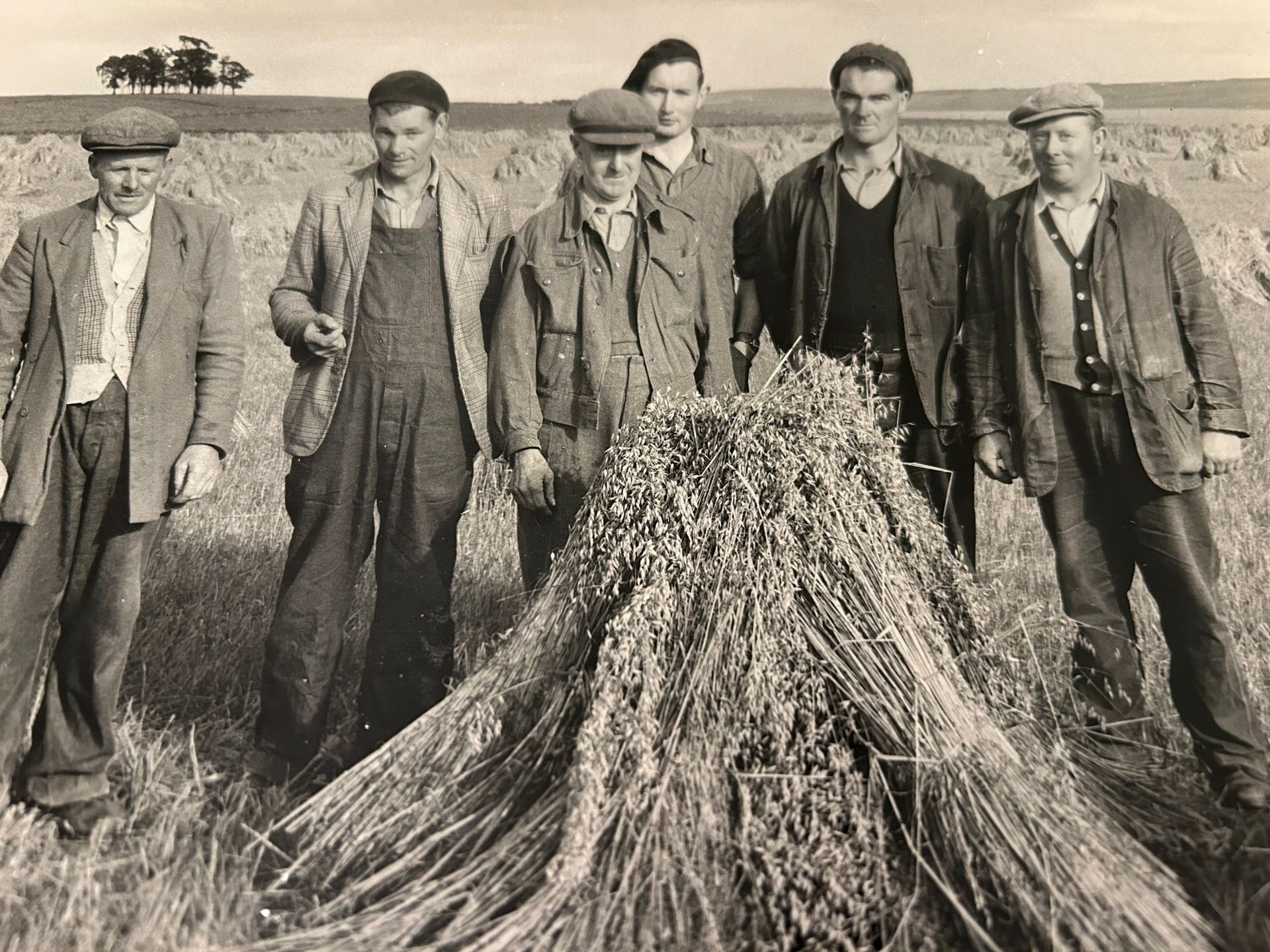
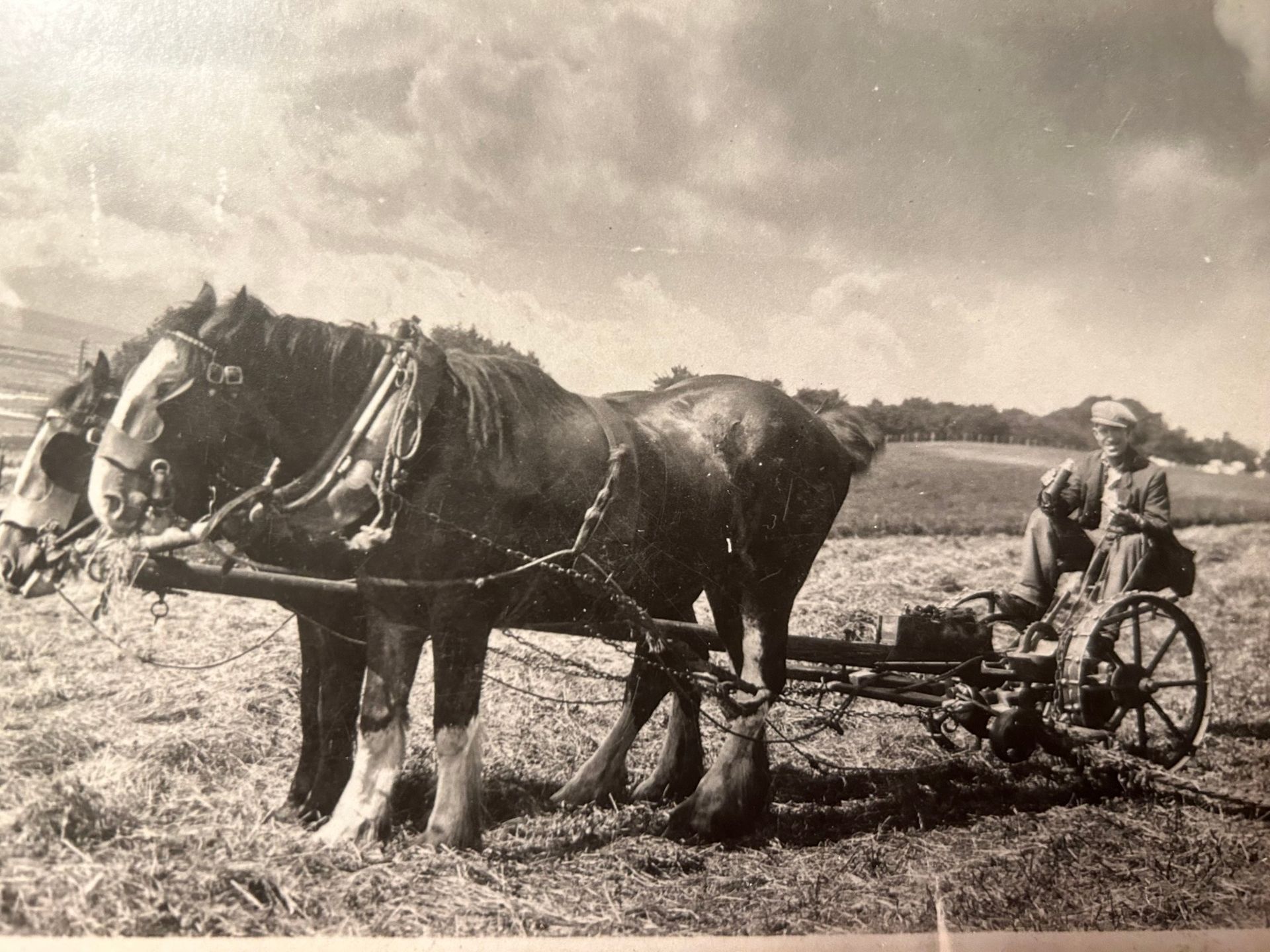
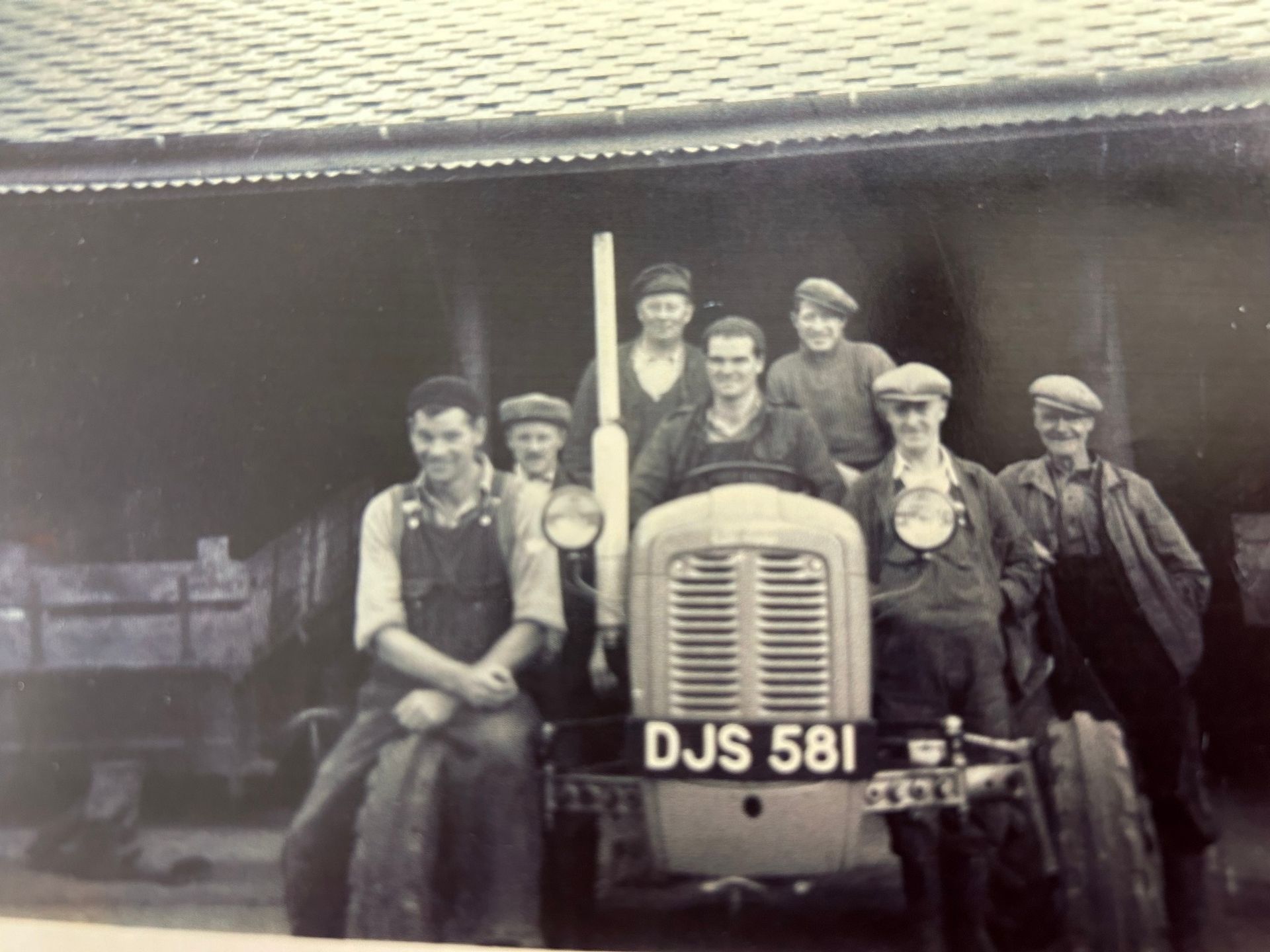
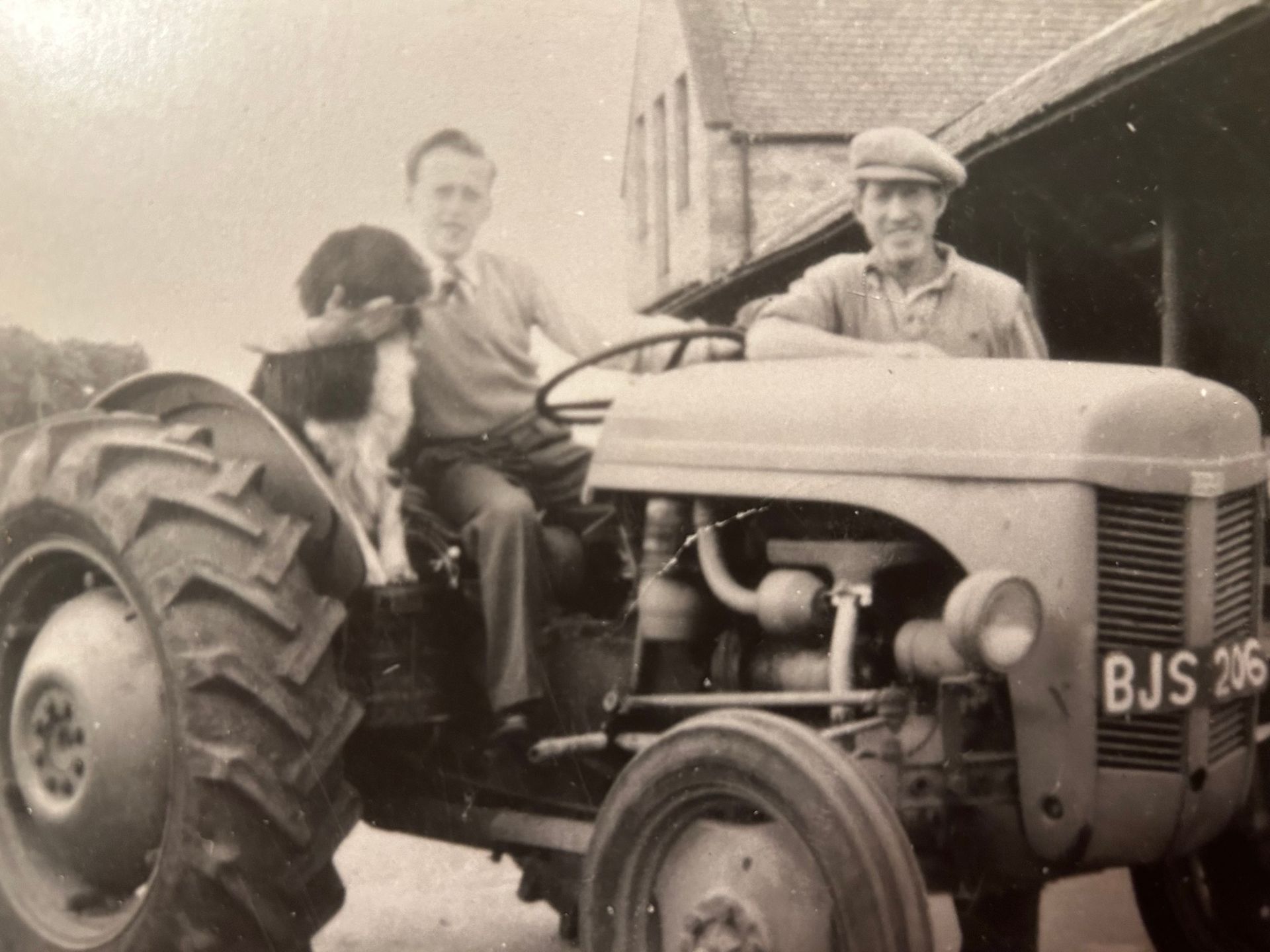
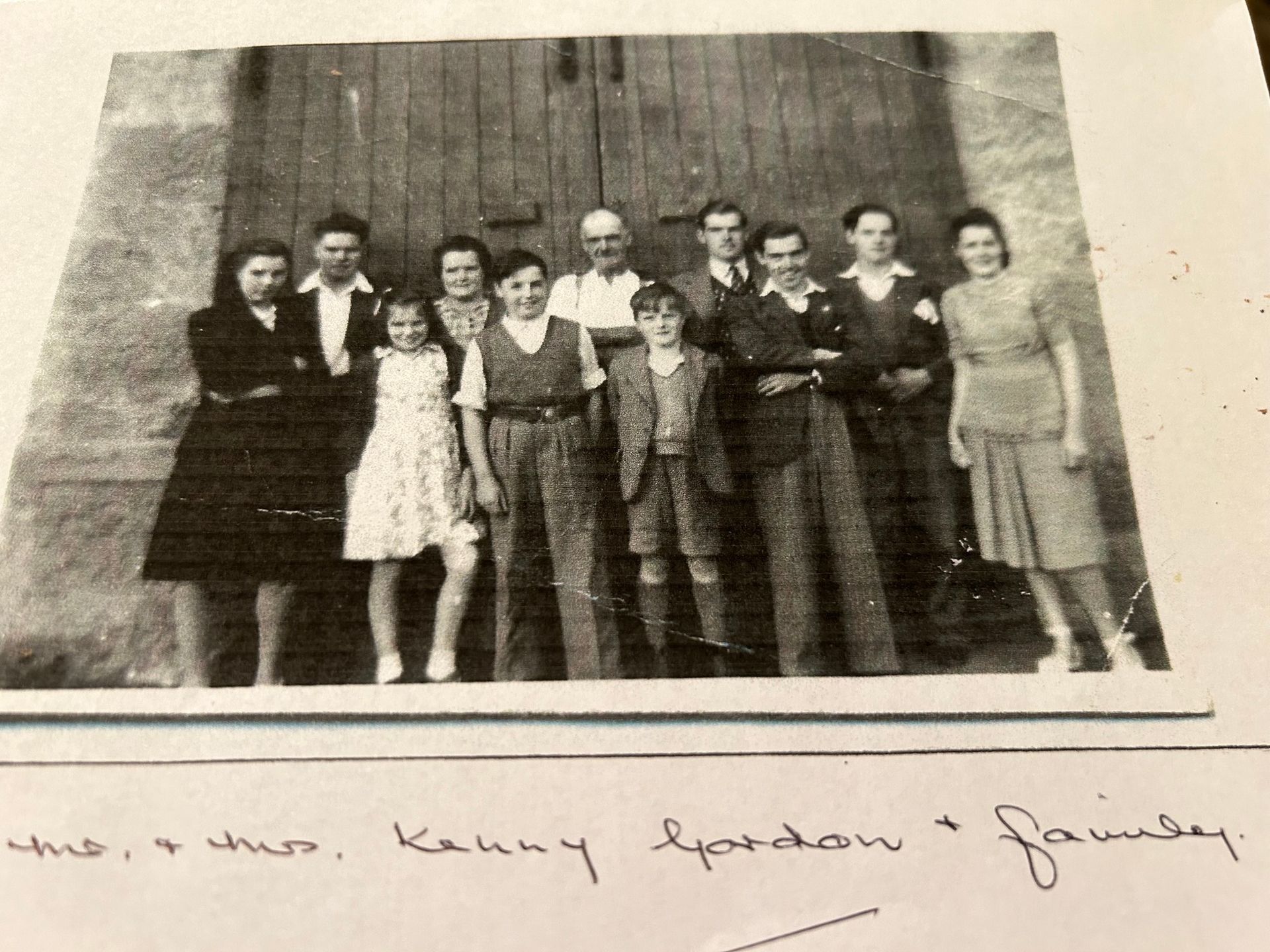
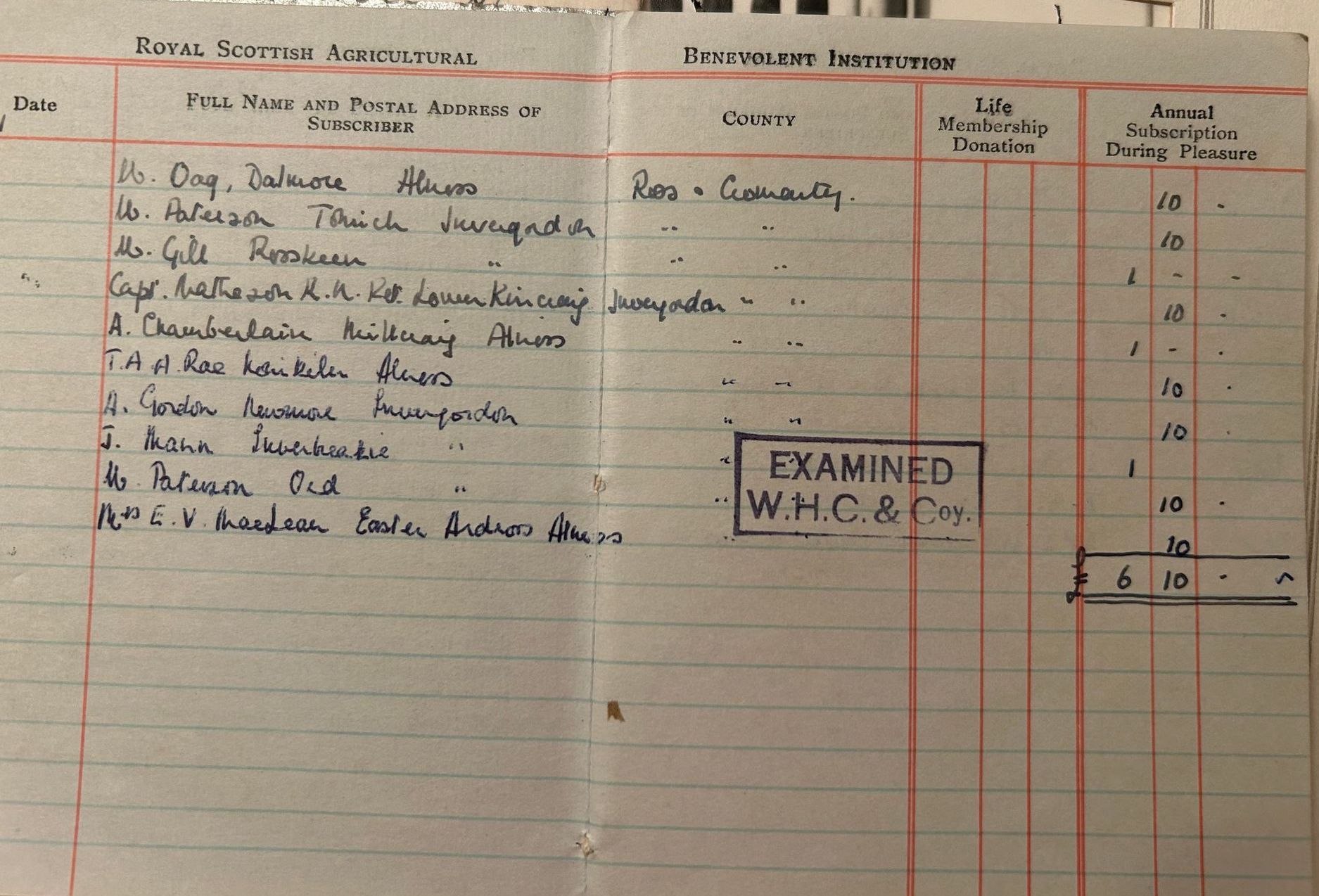
DALMORE FARM HISTORY: WEEK 3
Breeding high quality livestock always featured highly throughout the family’s life here at Dalmore Farm. Willie and Cathy always had an keen interest in breeding and exhibiting. We have a trophy here at the farm from the East of Caithness Agricultural show in 1928, this was for the best exhibit in poultry won by W. Oag. In 1929 and 1930 it was won by C. Oag. Willie and Cathy were very much in competition with each other, both producing beautiful birds.
Later, son David bred and showed poultry, he kept many unusual breeds. He had a great friendship with Donald Logan from Fortrose, Carolyn remembers many fascinating visits to Donald’s home where she learned so much about breeding poultry. She would often go to poultry shows and remembers meeting lots of interesting people who shared their interest. David regularly won the bird trussing competition at the Black Isle Seed and Root show, much to the frustration of the farmers wives in the Black Isle. Bird trussing is the preparation of a chicken, duck or turkey, presenting it ready for the oven.
In 1948 aged 18, David was called up for National Service, he was asked to go to Leicester where he stayed for 3 years, learning and increasing his skills in Mechanical Engineering. He was given a report at the end of his service:
“This N.C.O. is a man of above average intelligence and has a good knowledge of his job. He is a willing worker and always tries his best in the job. He is a clean and smart soldier, well spoken, and polite and is of a cheerful disposition “
After his national service in the Royal Engineers, David returned home to Dalmore where he took responsibility for the dairy and the milking. At that time, the cows were largely Ayrshire with some Shorthorns. The family were using an Ayrshire bull for pure bred replacements, and an Aberdeen Angus for crossed calves and easy calving. The milking times were 4am and 4pm.
David was always a keen sportsman and would take part in events in his daily free time. David entered running events and pursued his interest in cycling. It was common practice for David and his friends to cycle from Alness to Strathpeffer or even Inverness for a dancing night out, he would then cycle home for the milking at 4am. We should remember there were no bridges at this time and the road trip would involve a cycle on the old A9 through Beauly. Always competitive, David enjoyed road racing on his competition bike and held the record for the run from Inverness to Beauly for many, many years.
On returning to the farm, he would top up his calories by having 6 raw eggs beaten in a pint of full fat cream, no worries about cholesterol for him. He also had oatmeal brose and huge amounts of raw comb honey which he ate off a spoon every morning.
Because of the time between milking, it gave him an opportunity to develop another passion. David grew exhibition flowers in the farmhouse garden including Chrysanthemums, Dahlias and Sweet Peas. These varieties were later joined by Begonias which he showed at National Shows. David was always encouraged at that time by Hugh Munro the Butcher (David and Charlie Munro’s Dad). Hugh shared his huge knowledge and enthusiasm with David and here a lifelong interest and friendship was born.
He later went onto have a strong friendship with Mr. Ramsay, a Begonia grower from the Lanark area. Mr. Ramsay bred a begonia called Jennifer Wilson, still available from Blackmore and Langdon today. His fellow breeder Willie Muir from Carnwath bred and named a Begonia Katie Wilson for showing which is a vibrant red colour. David was delighted that his two dear friends chose to name these Begonias after his two granddaughters.
David always had a passionate interest in breeding and showing their North Country Cheviot Sheep, being part of the breed society circle of farmers was very much part of life here at Dalmore Farm. Many visits from other breeders ended up being a social occasion and a legendary social life was enjoyed. Many very entertaining stories were told about the antics this group of friends enjoyed while travelling and showing livestock all over the country.
In 1950 at the tender age of 20, David set off in an old Ford van with 2 North Country Cheviot tups in the back on a road trip to the Royal Show in Oxford. This was a serious undertaking in those days on his own, especially with the roads as they were. It is difficult to imagine the smell inside that cosy little van. He won the overall Championship with one of those tups and as a result we have a beautiful silver medal to treasure. Over the years he went all over the country showing sheep with incredible success, and then later was asked to judge at many shows and sales, some of his stories and adventures were very hard to believe.
There is a wall at the farm covered in certificates from some of the early shows and it is an incredibly interesting read. At that time the English Royal Show and the Highland Show travelled to different locations throughout the length and breadth of the country, this never stopped participation and cooperation between breeders, not only to shows but also to facilitate sales. In the early days they would collectively use the train to transport stock. Later, moving onto stock lorries which would collect the animals, along with their feed and bedding along the journey. Although competitive with each other, these farmers and breeders were very supportive of each other, and all became lifelong friends.
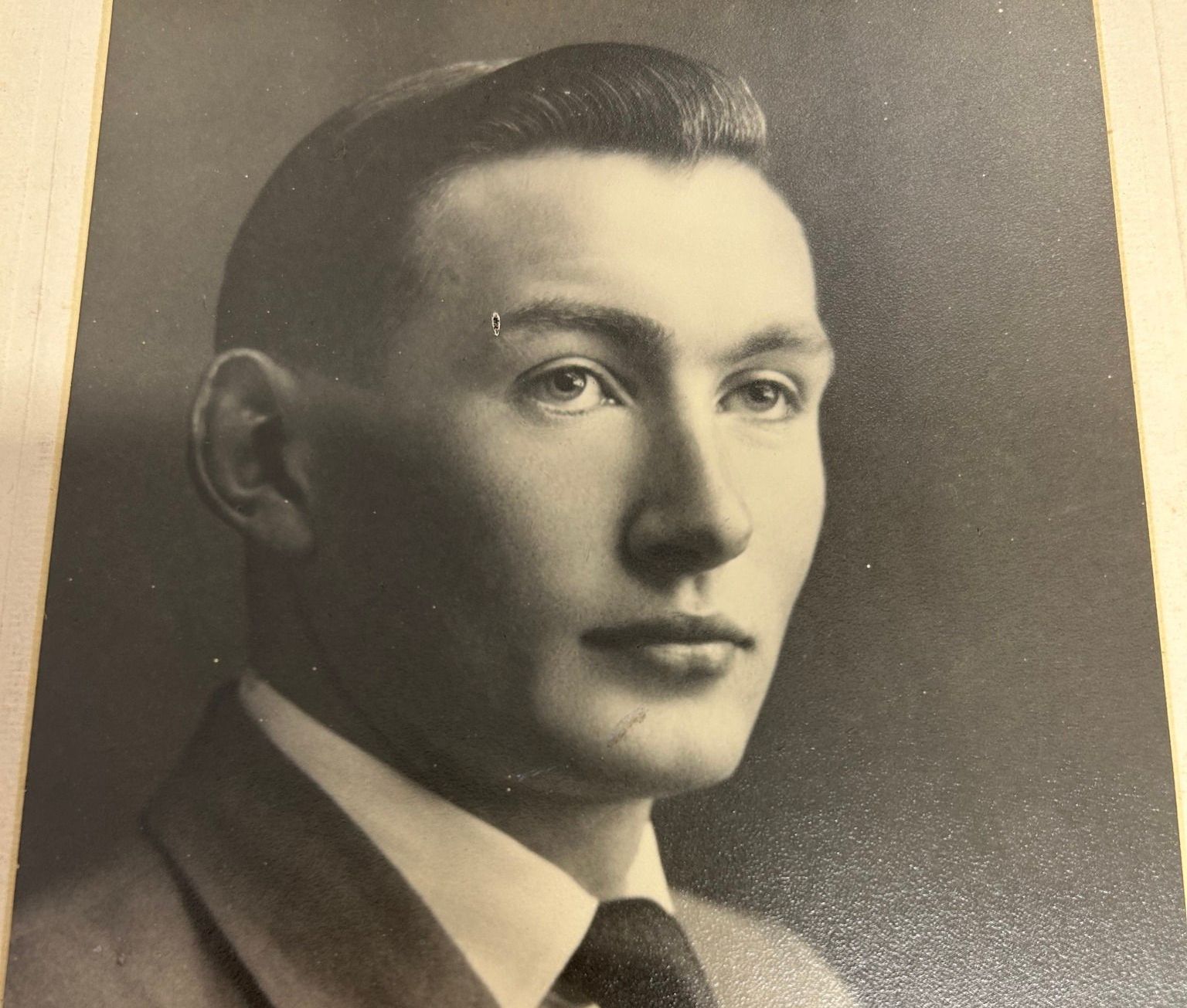

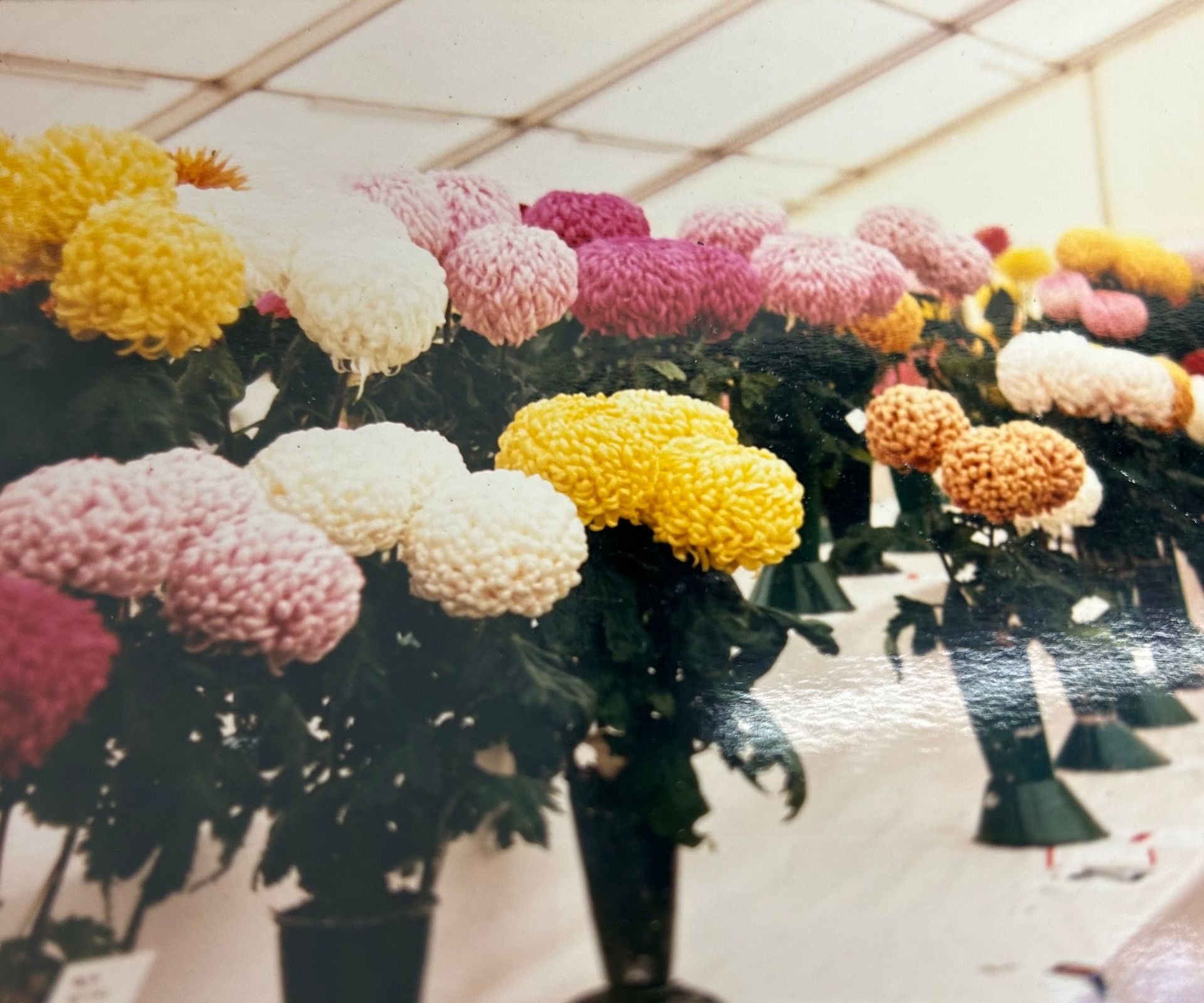
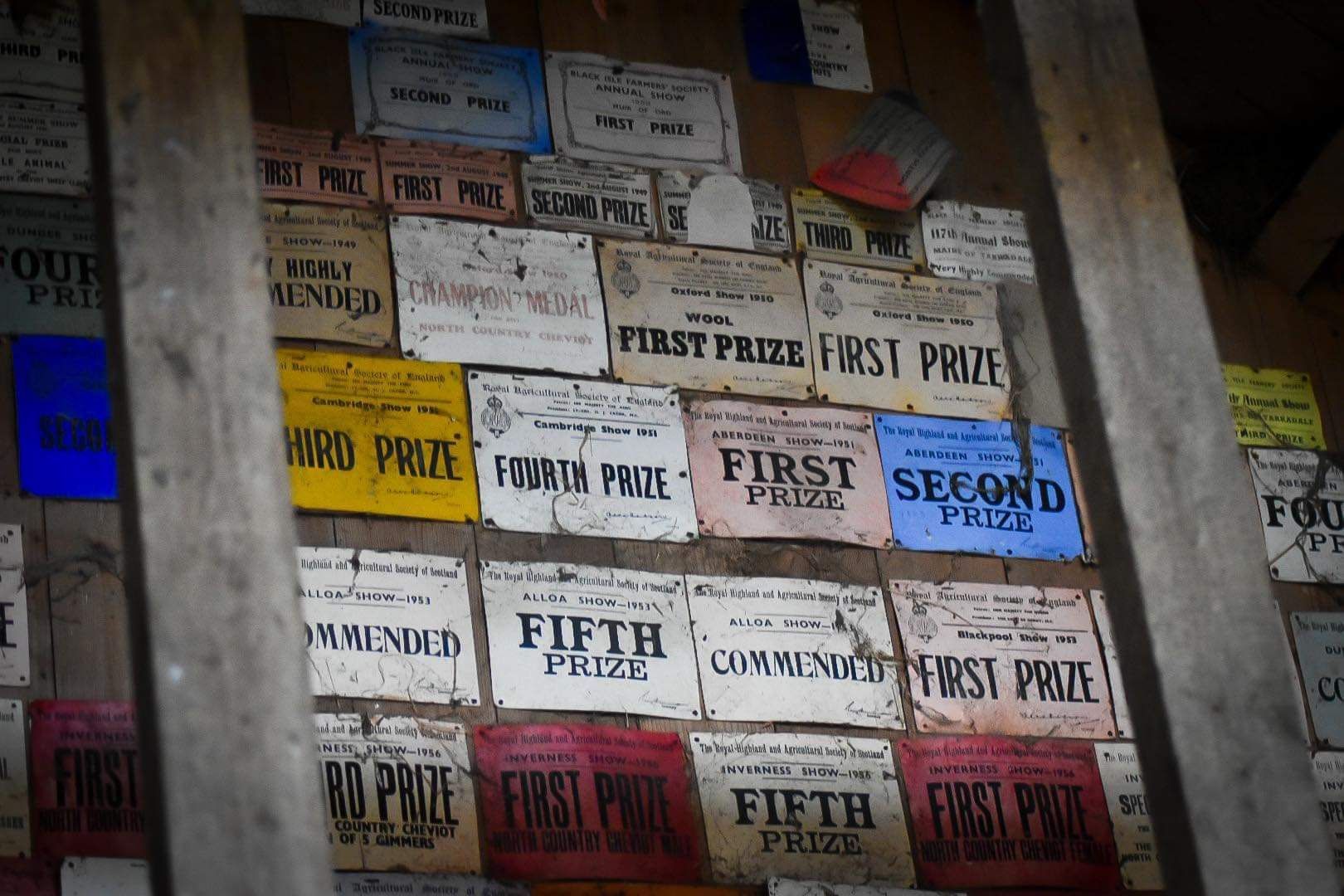

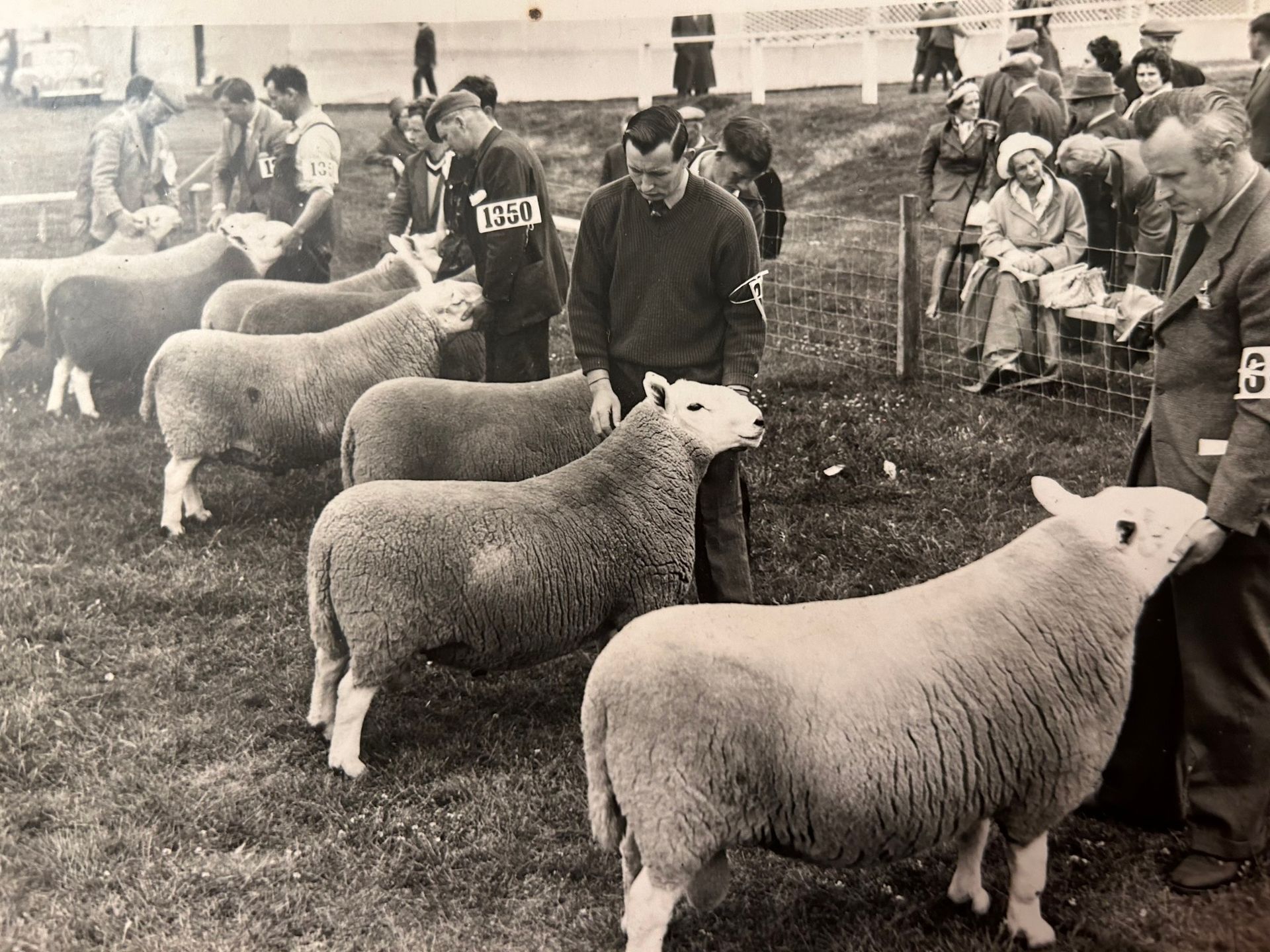
DALMORE FARM HISTORY: WEEK 4
David was always very active in The National Young Farmers activities, taking part in stock judging and speechmaking. He was a member of Mid Ross Young Farmers and was very successful at speechmaking. He won the national finals with Ken Humphries, George Macallum and Bill Merchant (the college lecturer), the three other members of the team were all from Dingwall.
David met his future wife whilst they were pupils at Invergordon Academy, they were good school friends and had always kept in touch. After leaving school, Joy went to work in London as a Nanny, many Highland girls did so in those days and in her spare time she worked as a model. Joy was tall, attractive and very glamorous with an 18-inch waist. On a return home from work in London, David attracted Joy's attention at a Young Farmer’s dance, and they became engaged. They were married in 1955 at Ness Bank Church in Inverness followed by a reception at the Caledonian Hotel. It is believed they chose this venue as it was the only venue large enough at the time to host all their family and friends.
In recent years when we were clearing the farmhouse office, we found a copy of the invoice from the Hotel for their reception, along with a list of the wedding guests and the presents they kindly gave David and Joy. It’s probably no surprise to anyone of that generation to know we also found nearly every present on the list still in the house. These gifts were all treasured, especially the clock given to them by all the staff at Dalmore Farm. This special clock always had pride of place on the sitting room mantle piece, today Katie still has this clock in the Farmhouse. David and Joy were married for 59 years.
David managed to take time away from the farm to honeymoon in the Lake District and on their return, they set up home at the farm together. Shortly afterwards, David was given a very exciting opportunity. He was chosen to take part in an exchange visit with Canadian young farmers. Newly married, he left Joy at home and travelled to Canada with fellow farmer Alastair Grant from Clune Farm at Dores. Reading his diary of the trip has been fascinating, the 3 month trip gave them an opportunity to learn about agriculture on the other side of the Atlantic, something he used well on his return home.
The first page of his diary from the trip, tells us about the start of their journey to Glasgow where they boarded the boat to Canada. On arrival in Glasgow, David and Alastair met with David’s brother Hugh who was on a secret trip to Glasgow. Hugh was in Glasgow on a trip to the US Embassy to apply for a visa to work in the USA.
Hugh was successful in getting the permissions required and having returned home to break the news to his parents, started making the arrangements to make his trip. Hugh had always been interested in the stock at the farm, but focussed more on the cattle and dairy side of the farm, therefore it was no surprise that he went to work in the USA and subsequently a large dairy enterprise in Canada. Having had a year of overseas working, Hugh knew he was there to stay. After a year, Hugh returned home to ask Sadie Ross, also from Alness and the love of his life to join him abroad.
We found out whilst doing research that Hugh and Sadie etched their names into a tree in the Dalmore Estate. Just along from Dalmore House there is a tree with 'HUGH OAG + SADIE ROSS'. Unbelievably, after almost 75 years you can still make out their names on the tree!
Hugh and Sadie were a wonderful hard working and focused couple. Hugh spent his life working with Holstein cattle, initially working for others then on their own farm where they set up their herd of cattle, they named Dalmore Holstiens. Hugh spent his life gathering information about the breed and used his understanding of genetics and matching sires to females to improve the Holstein Breed. Hugh was recognised for this when he was awarded nationally for his improvement of the breed in the US. Hugh and Sadie also enjoyed competing with their livestock. I am sure the good animal husbandry and stockmanship he gained here from both his mother and father were the grounding for his farming life. Hugh and Sadie have two children Alastair and Linda.
Hugh was missed from the Farm but as time was moving on and machinery improved, there was less manual work required and the numbers of workers at the farm naturally reduced. Dairy farming became less profitable, and a decision was taken to move out of milk production and have cattle for meat production, along with a move towards other sheep breeds producing cross fat lambs. The competitive spirit was still in evidence as the farm became successful showing these fat lambs in winter carcass competitions.
In September 1957, David and Joy were delighted to celebrate the arrival of daughter Carolyn into the family, it is reported that because it was harvest time, new father David took longer than the acceptable amount of time to make an appearance at Raigmore Hospital.
David and Joy were overjoyed when their son William followed in December 1959, William was a very clever boy showing particular interest in anything scientific. He was fascinated by anything connected to discovering space and he loved the original Thunderbirds. William was very musical and was a pupil of the late Major John Burgess who was teaching William how to play the bagpipes. The relationship was much more than a weekly piping lesson, they were great buddies and William showed exceptional talent being a very diligent student, something which was very important to his very well respected tutor.
At the age of only 10, William was tragically killed in an accident. William was hit by a car on the road in front of the Farmhouse. Life at Dalmore from this moment on was never really the same.
John Burgess wrote “The William Oag Lullaby”, to be played on the pipes. This music written for William was something David and Joy always treasured, we have a lovely recording of local girl Fiona Maclean (nee MacKay) playing the tune. Fiona now lives in The Outer Hebrides with her husband and daughter, their family home is called Dalmore.
During the research for our farm history, it has been lovely to find information and pictures we had never seen before. Thank you to Auntie Sheila for sending over a copy of Hugh’s Obituary.
Hugh Oag – The best dairy man of his generation:
It was with profound sadness I noted the passing of Hugh Oag, (The Post-Journal, Nov. 26, 2013)
Hugh’s life was a true American success story. Rising from modest means and coming of age in post-war Scotland, Hugh sought opportunities in North America, first in Canada and in 1960, the United States, settling in Chautauqua County. Eventually, with his talented and supportive wife Sadie, an excellent farm was purchased in Towerville and they set to work, from the ground up, building an outstanding herd of registered Holstein cows under the Dalmore prefix.
Hugh possessed a quick, first-class mind, coupled with a driving work ethic. His life revolved around the dairy cow: he made her his life’s work and his knowledge of her was nothing short of encyclopedic. To his lasting credit, what Hugh learned was generously shared with those who sought his guidance.
Had Hugh’s accomplishments been limited to the dairy cow alone, his would have been a remarkable life; but Hugh’s outstanding skills as a general farmer, shrewd manager and enterprising businessman fully matched his abilities as the region’s preeminent cow man.
To those who work with dairy cows the term “good cow man” is high praise: but Hugh was more than just a good cow man, he was clearly in the elite – among the very best. Hugh was a man of honesty, integrity, good humor and humility. His keen insight and wise counsel was highly valued and eagerly sought out by his peers. Southwestern New York is noted for its good farmers: amongst them, Hugh Oag will be remembered as the best dairy farmer of his generation. His spirit will be felt, and his name remembered where good cows are bred, kept and milked. Well done, Hugh; rest in peace.
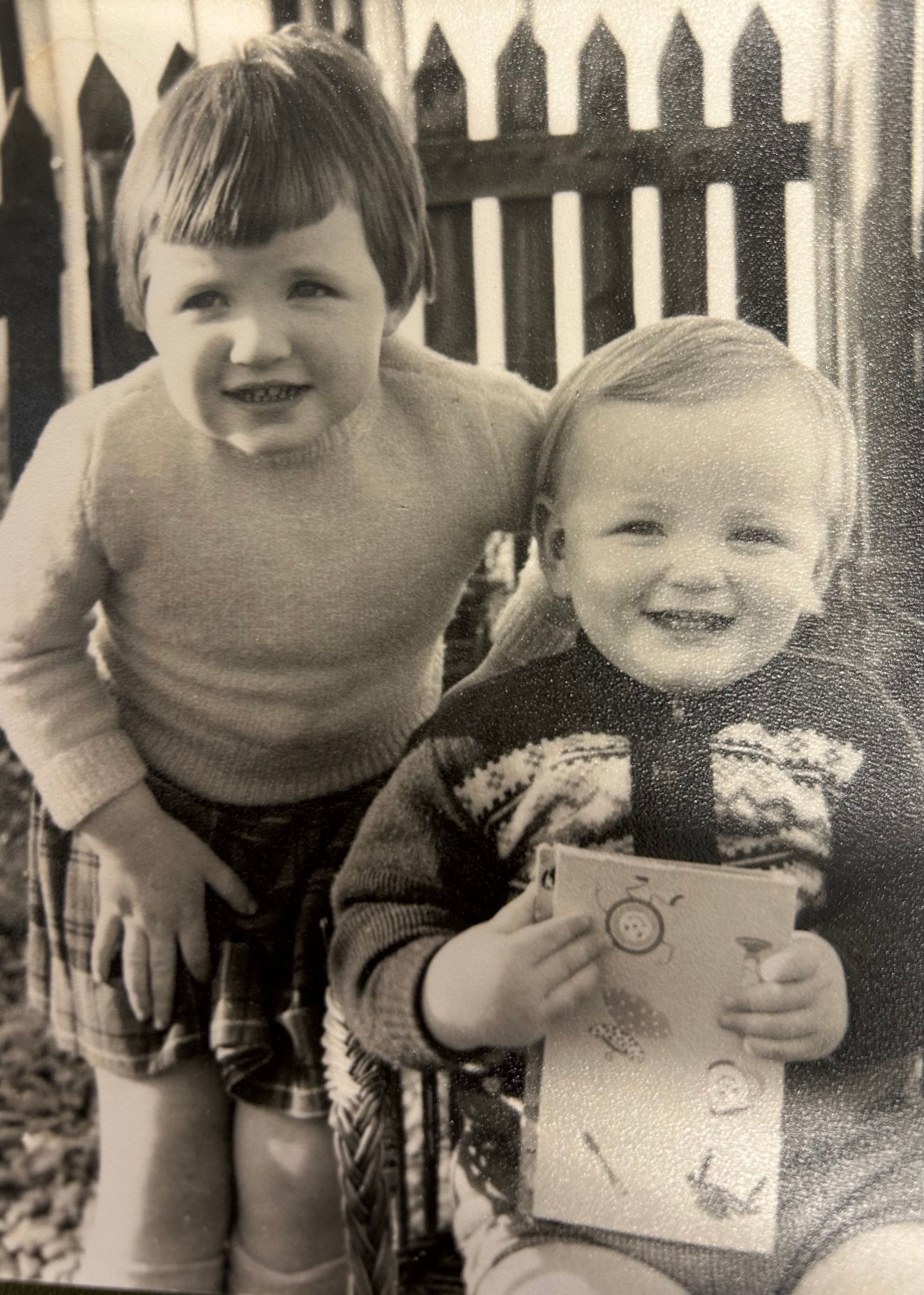

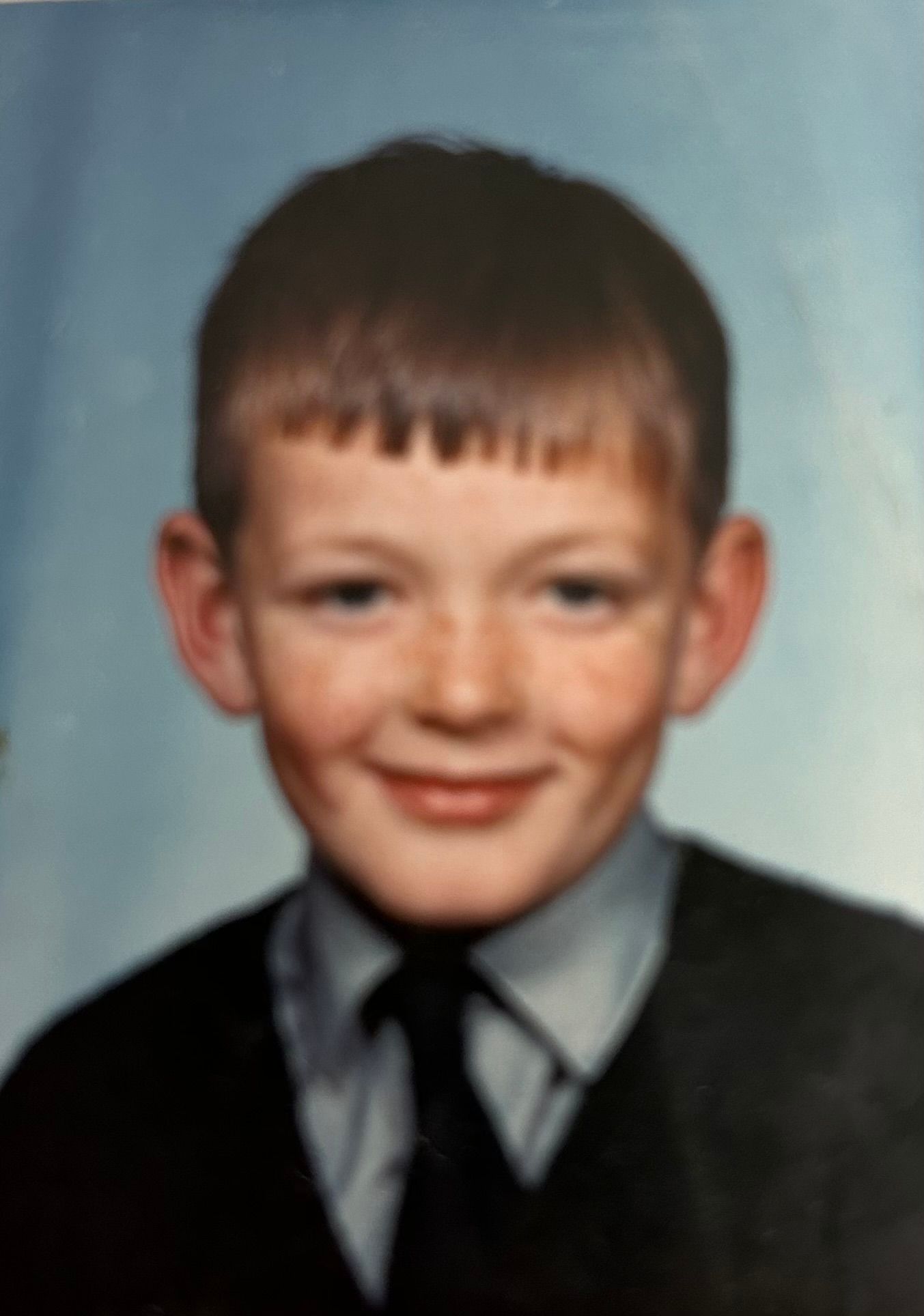



DALMORE FARM HISTORY: WEEK 5
Back in the early days here at Dalmore, the cattle on the farm were used for dairy purposes to produce milk. However, in 1983 there was an opportunity to start breeding Aberdeen Angus cattle and reinstate the Dalmore herd. Prior to 1944 when the Oags purchased Dalmore Farm, the previous family had also owned a herd of Aberdeen Angus.
Joy had always said she wanted to look out her kitchen window and see a field full of black cattle. David and Joy’s first heifer was bought at the Perth Bull Sales, her name was Collin Pit Black Lily, from which many of the herd were bred from. Black Lily came from Cumbria and proved to be a particularly good cow. David would show Black Lily and during this time she won overall champion at the Black Isle Show, along with several other show wins throughout the area. The herd grew to 60 cows and they were indeed a superb sight in the paddock field beside the Farmhouse. Being members of the Aberdeen Angus society gave the family an opportunity to visit other breeders and have a look around their stock, these were always social occasions.
One of these occasions involved a family trip to visit the Aberdeen Angus herd at the Castle of Mey in Caithness, the herd at this time belonging to HRH The Queen Mother. There was not a huge number of people and this was a very special privilege and a day out for us all to remember. There was an organised trip around the fields where we got the opportunity to view all the high quality cattle. This was followed by tea inside the Castle of Mey where the Queen Mother poured the tea for everyone. She also poured the drams for those who were not driving. This was a really special day for all of us, Katie was 3, Jenny was a baby and it was just like having tea with your own Granny. The Queen Mother took an interest in everyone and made us all feel so very welcome. We remember the Queen Mother passing comment on how well behaved the girls were and told us they were much better behaved than her boys – referring to William and Harry who are a similar age.
David also had a huge interest in breeding and driving horses. Over the years, there have been many people who had connections with Dalmore Farm because of their common interest in horses. David drove his horses in many carriage driving competitions and took part in the Scottish Championships at Scone Palace. He took ponies to many events where he would do demonstrations and spent time supporting friends. Over the years he drove many a bride to their wedding -including Carolyn and Warwicks own wedding - along with beauty queens at Gala parades. He was always very smart himself with a suit and top hat. The ponies would be beautifully turned out with all their tack polished to perfection. David was the steward at the carriage driving at the Black Isle show for many years and was always on hand to support others and offer advice. On many occasions he would get a call from a horse owner who was struggling to get a horse or pony into a horse box for travelling, he would go along and give some practical advice and usually the problem was solved fairly quickly!
There have always been horses at Dalmore. When the Oag’s first bought Dalmore there was 7 pairs of Clydesdales working on the farm. After the introduction of the tractor, the use of Clydesdales faded away. To date, there has always been other horses on the farm.
David had a particularly beautiful Welsh Section B stallion named Beauvoir Toma Tillo, his pet name was Tommy. He was a beautiful chestnut stallion who was successfully shown all over Scotland. Tommy has many progenies throughout the Highlands, these ponies were extremely good natured and easy to handle.
Many children from Alness will remember Santa Claus arriving at Christmas events back at a time when there were no reindeer available to hire. David would help out on these magical occasions by pulling a decorated cart for Santa.
David’s youngest brother Alastair was also a very keen horseman and took part in many Pony Club events in his younger years. We have a photo of Ali and his future wife Fiona on their horses Star and Flint. Ali and Fiona met at school and spent many happy hours with their horses and competing together at events.
Our Jennie has always been interested in equine activities and had horses and ponies about the farm. Today we have two Shetland ponies Salsa & Pebbles, two full sized donkeys, Hannah & Chloe, two very cute miniature donkeys Ozzy & Wilbur and Jennie’s very handsome Highland pony Commander of Parkview (or Po to his friends).
Amongst the pictures for this week are lots of Katie and Jennie when they were little on various ponies we had here at Dalmore.
We remember many years gone by when Grandad was a steward at the Black Isle Show, back in the days when the organisers would enjoy the priviledge of parking their cars around the show ring. In those days, Joy would pack an amazing lunch for the family, we would open up the boot of the old Volvo 240 estate and enjoy lunch whilst watching all the action in the ring, those were the days!
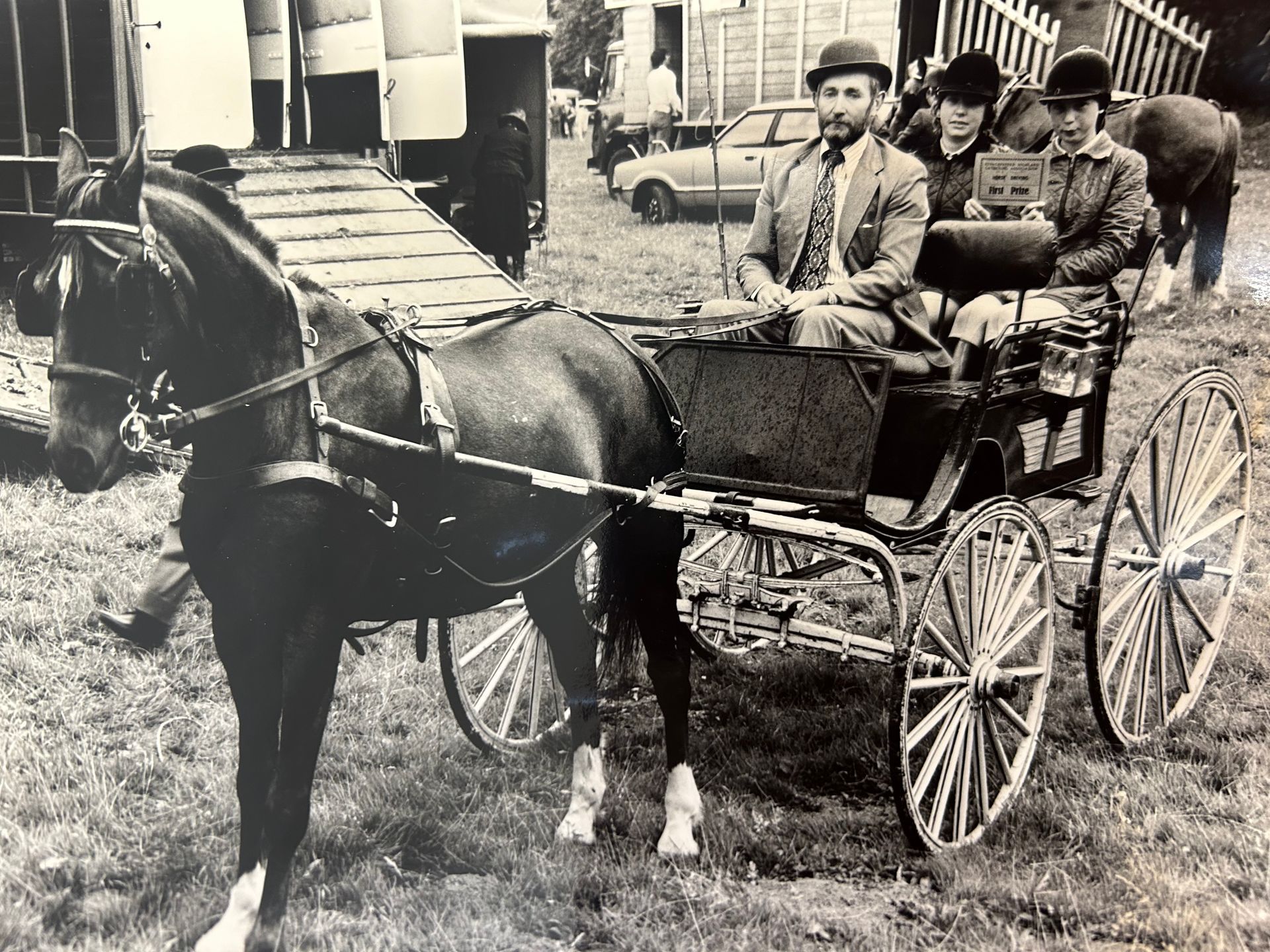
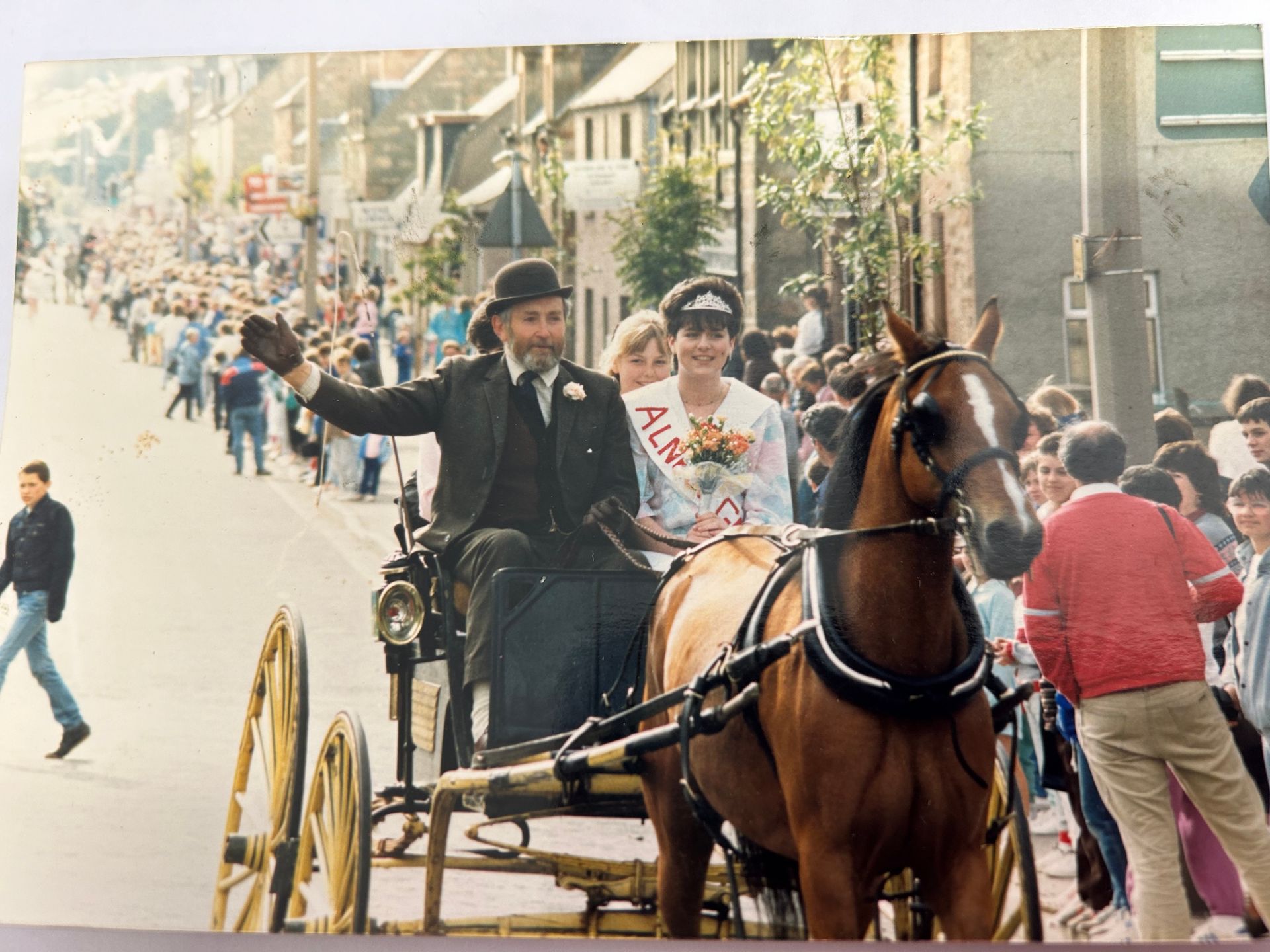
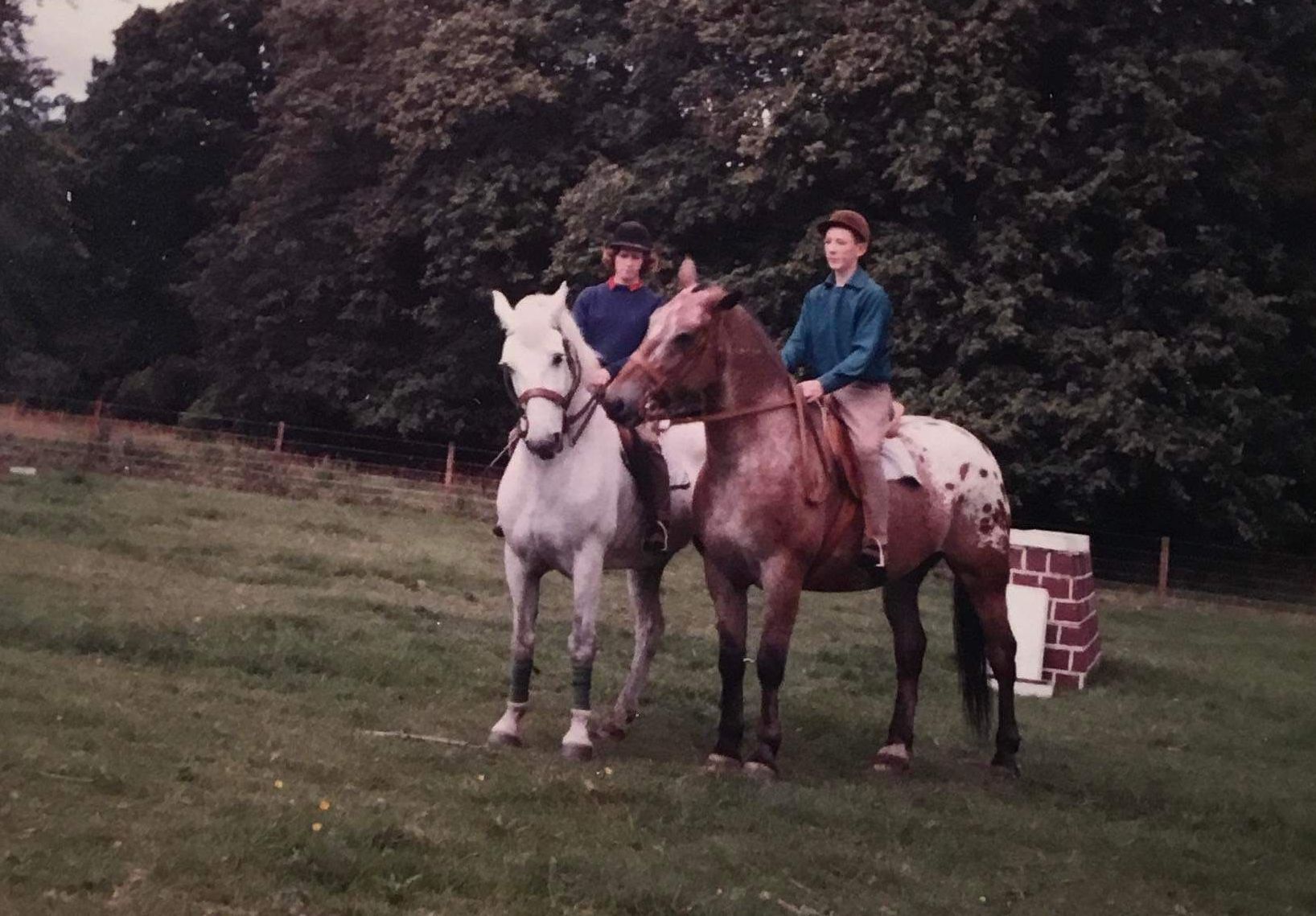
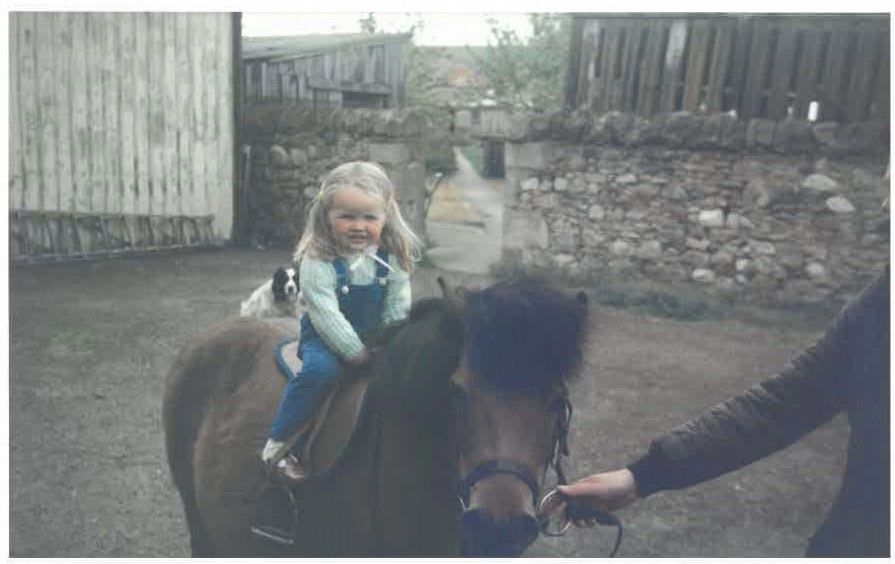
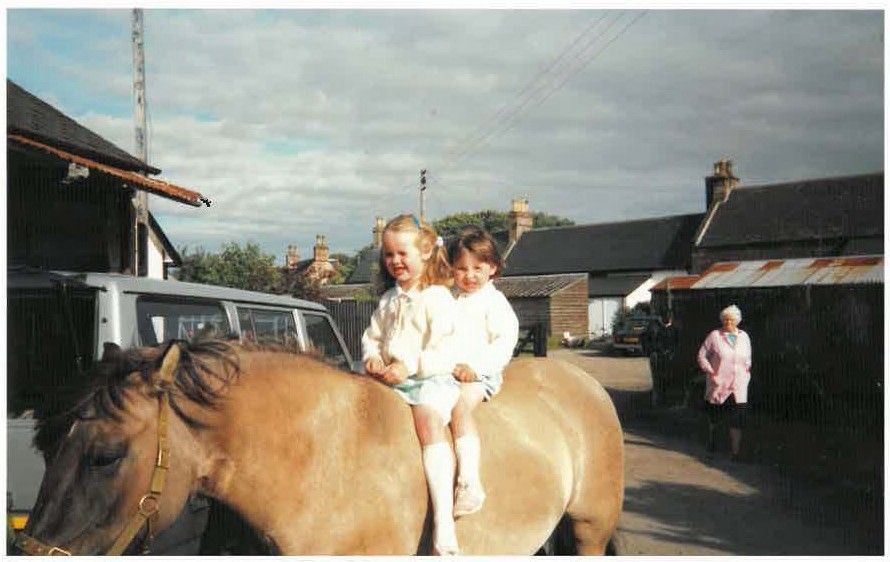
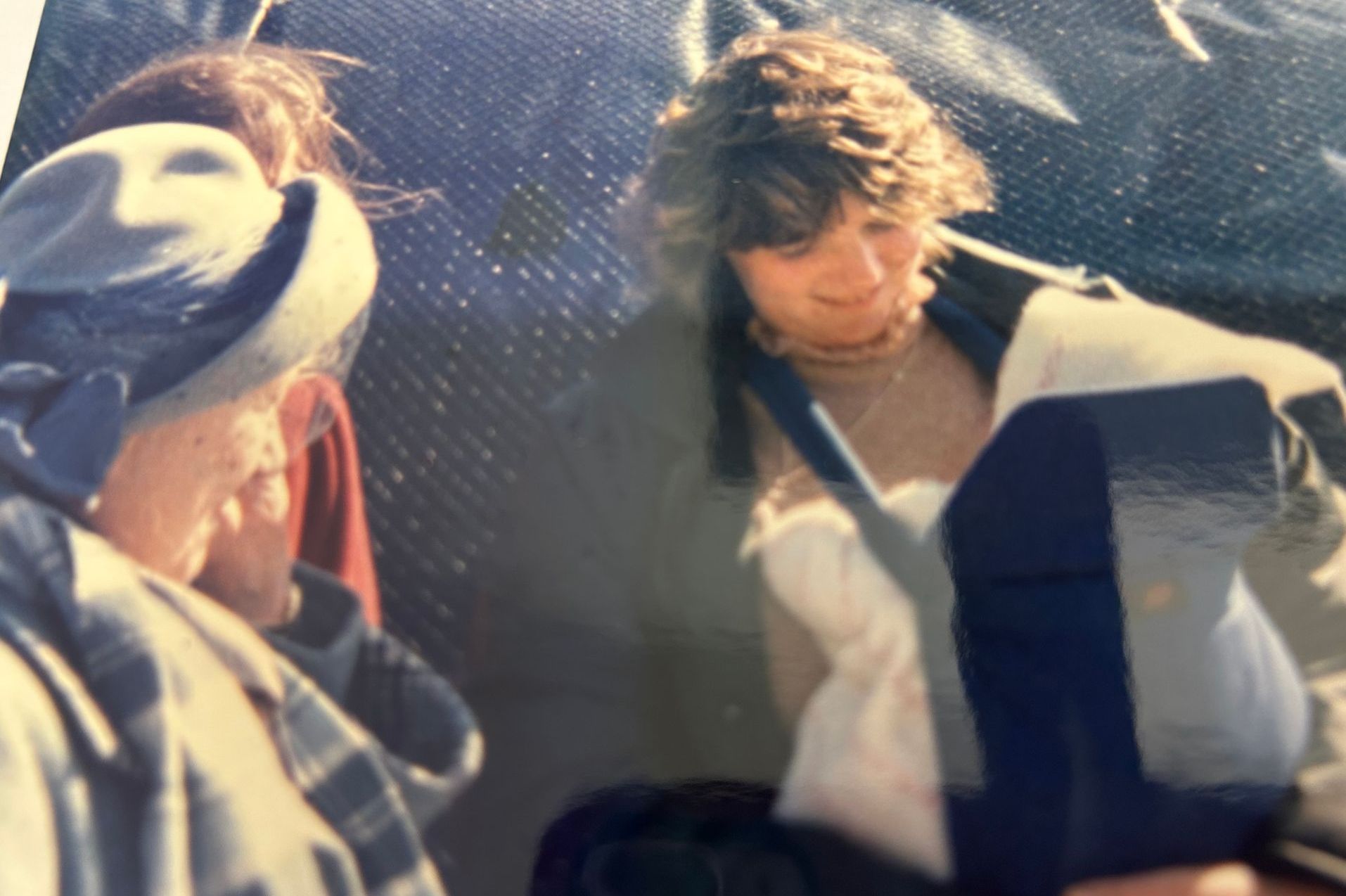
DALMORE FARM HISTORY: WEEK 6
While looking for information about our family’s time at Dalmore Farm, we have found some information going much further back in time, we have gathered this altogether for week 6.
The oldest house on the farm is the Grieve’s House now called The Old Dairy, this house was built around 1850. At this time, the Farm and The Dalmore Distillery were jointly owned and the grain from Dalmore Farm was used to make the malt for The Distillery. The second oldest house is the Farmhouse which was built around 1890, this was followed by the six farm cottages and farm steading which begun being built in 1913. The first four farm cottages were built prior to The Great War, in a terrace with beautiful bay windows. The last two cottages have only plain panel windows, this was because the government introduced a purge on glass to support the war effort.
The cropping plan from 1898 is the oldest document we have found so far, we have attached pictures of the details.
The farm was offered for sale in November 1913 by Andrew Mackenzie, we have a copy of the particulars and plan of the farm. We have a copy of his personally written letter agreeing to the final valuation.
The valuation of Stock and crops at that time was well detailed and we have copies of all the beautifully written paperwork. The valuations of the stock and implements are even more interesting, a Clydesdale horse worth £60 in 1914 is the equivalent to £8,600 today. The items of dairy equipment listed are probably still down in the shed as nothing was ever thrown away, a trait everyone at Dalmore would tell you Carolyn has inherited. We have all been surprised by the value of Clydesdale horses all those years ago. Along with the purchase price of a horse, there would have been a huge cost in all the harness and equipment required to fit out a new work horse.
Following the handover of Dalmore Farm to the new owners in 1914, a great deal of work was undertaken to create a new farm steading, which has resulted in much of what we have on the farm today. These buildings were largely built of sandstone with pitch pine and good quality natural slate.
We have a picture of the Grieve’s House, the sandstone house in the middle of the row of cottages as the only house at that time. The Farmhouse and six farm workers cottages followed, and the particulars of the build were well documented.
There were full plans for the farm steading and the costings are documented, this is a very interesting document, and the details are fascinating.
The costs of building the steading were:
Walter Ross (Stone Mason): £569 4/11
Hugh Mackenzie (Carpenter): £1498 0/11
Donald Ross (Slater): £373 14/5
John Munro (Plasterer): £254 10/7
W. MacRae (Plumbers): £ 85 17/4
A. Denoon (Carters): £2300 1/6
Allan Bros (Millwrights): £380
A. MacKay (Carpenter): £6 6/6
A. Maitland (Architect): £140
The total for the entire build: £2826 8/0
In today’s money, this would equate to a build cost of over £400,000. Many of the specialist skills used at this time have now been lost and there would not be enough craftsman available to build a sandstone build of that size today in 2024.
Our nearest neighbours are the buildings of The Dalmore Distillery which are just across the road on the shore of The Cromarty Firth. The Distillery was established in 1839 on the site of a meal mill, for the production of Pure Malt Pot-Still Whisky. We are very proud to share the Dalmore name along with the reputation of the Dalmore Whisky brand which is recognised across the world for the excellent quality of their product.
Extracts from the centenary booklet from 1939 written to celebrate the first 100 years of The Dalmore Distillery:
“Behind the distillery premises there is a high terrace which in the old days was the rallying point for the Highlanders against the Southerners, and the remains of the encampments can still be seen. Along this terrace, the railway branch line is now laid connecting the distillery with the main line at Alness Station, distance about half a mile, enabling barley and coal etc. to be delivered directly to the premises. The pier at Belleport was built during the Great War to berth the large trading vessels.“
“The foundation of a first-class Highland Whisky is undoubtedly the water from which it is made. Dalmore is exceptionally fortunate in processing, for these purposes the sole rights to the river Averon or Alness which flows from the picturesque Kildermorie Loch, about ten miles away in the centre of the mountains of Ross-shire and in the shadow of the Ben Wyvis range. The water is of the purest softness much valued by experienced distillers.”
“The malt barns are situated at the back of the distillery and are capable of holding some 5/6,000 quarters of grain. The bags containing the barley are emptied from the railway wagon or carts directly into the hopper at the bottom of which is the Miln’s shaker. The 2 malt kilns are 40 foot square, the malt was kiln dried over peat smoke.”
“No resume of Dalmore would be complete without a reference to the who have been responsible for the production of the whisky. In many cases sons followed in their father’s footsteps so that the art of distilling becomes inbred in them. “
Our family at Dalmore have always enjoyed a close relationship with the Distillery, and all these years later, Carolyn’s son David who is the Farmer, is growing malting quality barley which is used in the production of whisky.
For many years Grandad David would take his Thursday stroll over to the Distillery to see Drew Sinclair and the team, every week he would return with a bottle of Dalmore. As a matter of course, there would always be a turnaround in 7 days and the bottle would be consumed in good time for the next Thursday!
During the period of time when the legendary hospitality was offered at the Farmhouse, there was a general and well intended offering of Dalmore Whisky to everyone who came to visit. There is a family story about two maiden Aunts who came to visit and who would not partake of alcohol. Grandad Willie Oag made his own recipe “raspberry wine”. This wine was poured from a bottle filled with two cups of fresh raspberries, a cup of sugar and filled with overstrength neat white raw spirit from Dalmore Distillery. Having sat for roughly 3 months, this was a very tasty raspberry liquor. The Aunties would always refuse alcohol but would kindly accept a little of Willie’s raspberry wine. These were always entertaining visits for the younger members of the family who saw a totally different side to the two ladies on these occasions.
In recent times, following the passing of David and Joy, we were clearing the dining room and found many very old Dalmore whisky bottles. Most of them turned out to be empty - and to be honest, that wasn’t entirely surprising to any of us. Some of the older bottles were filled at Duncan MacBeth’s bottling plant in Invergordon. This was in a shed at the back of the old Royal Hotel which burned down, at that time the strength of 20 year was sold as 75% proof.
Our family and new Dalmore Farm Shop maintain a great relationship with the Dalmore Distillery brand, including the local team and office in Glasgow. We stock a full range of The Dalmore products available, and we are always happy to offer a welcome to the many customers who have come to visit the area.
Recently, we had a visit from Richard Paterson, the Master Blender who we have known for many years. It was wonderful to catch up with Richard and hear what he has been up to lately. Richard is a true gentleman and very kindly signed some 'Quintessence' bottles which were launched to celebrate his 50 years in the Whisky industry.
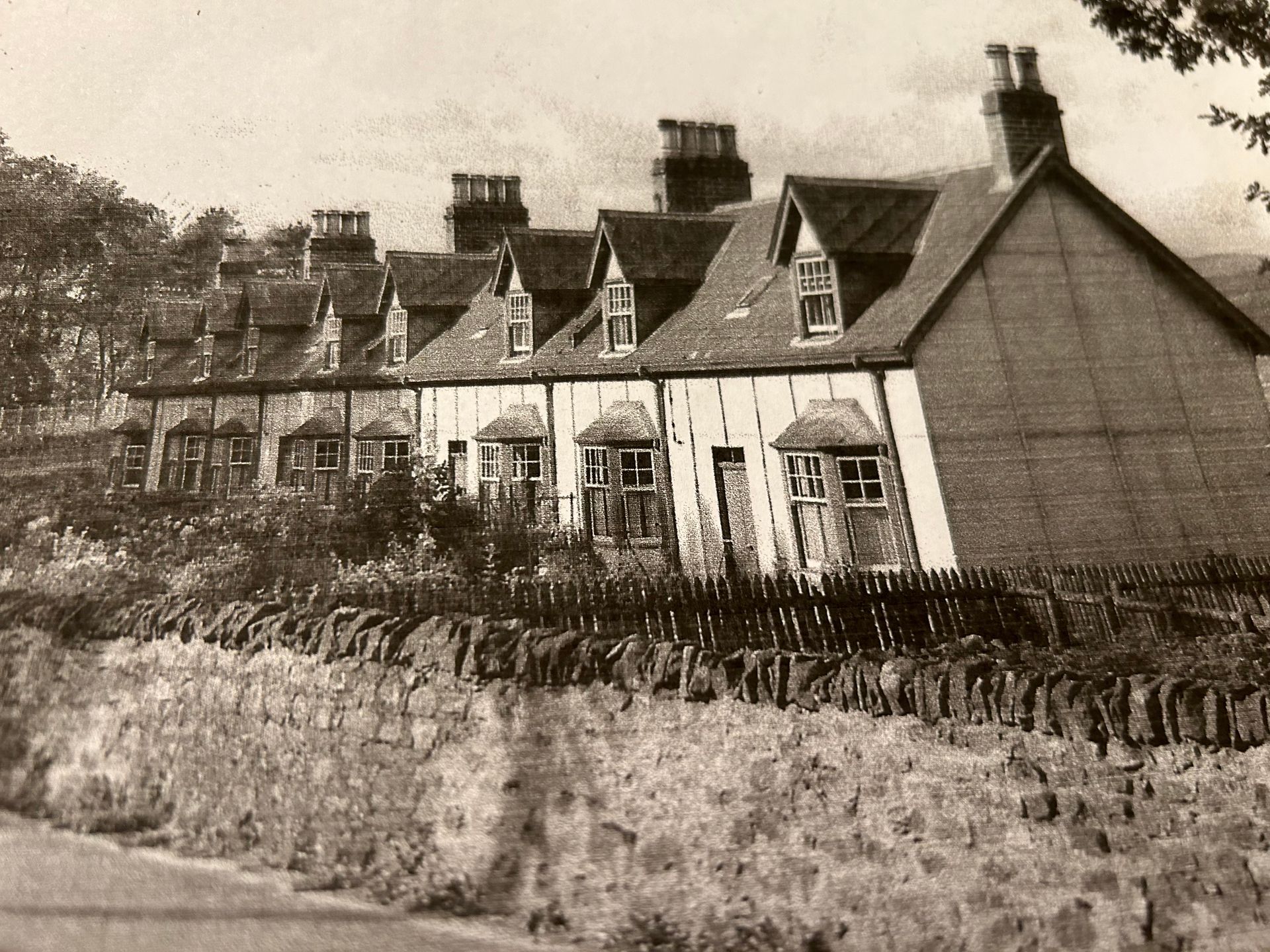
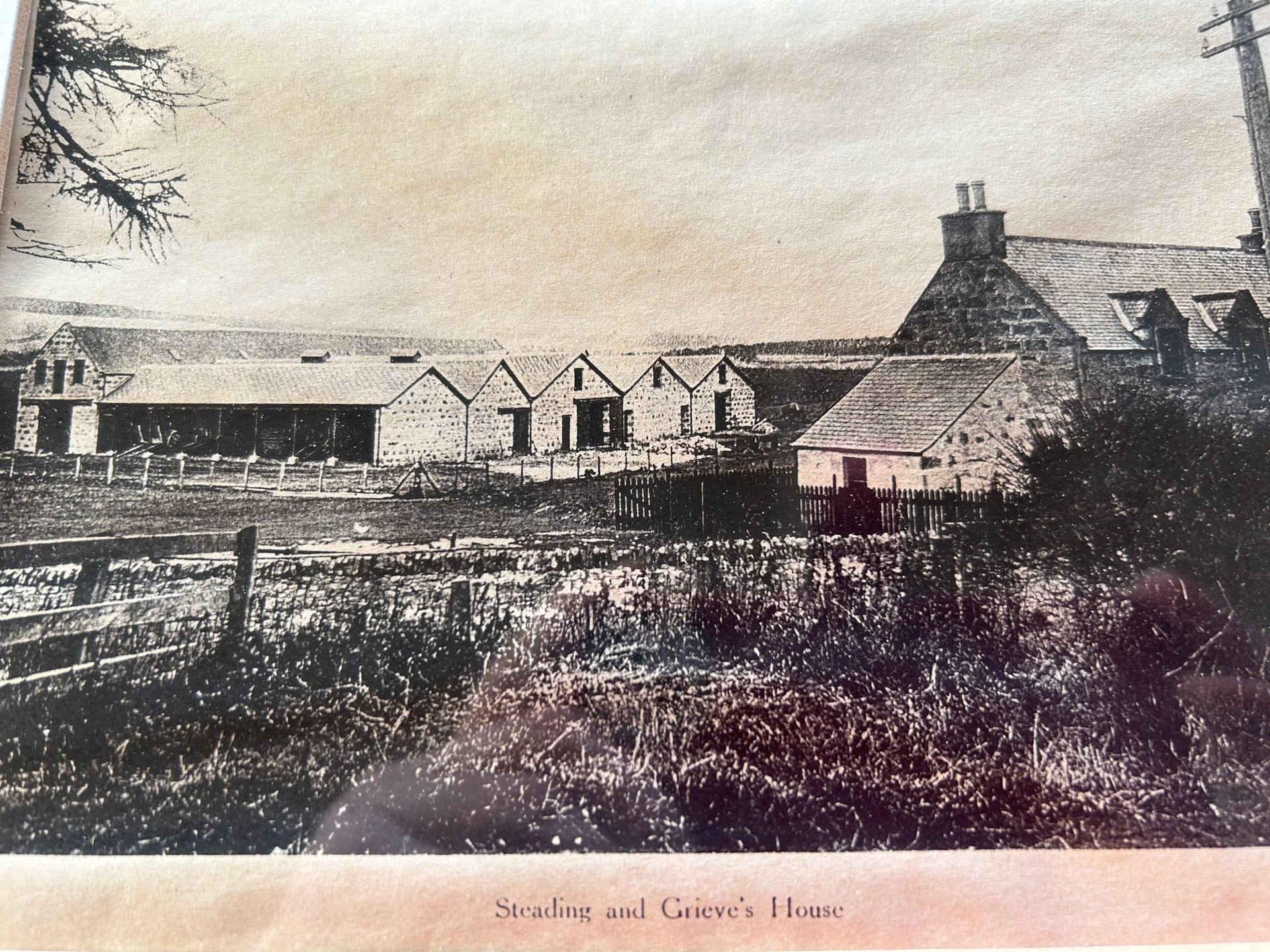
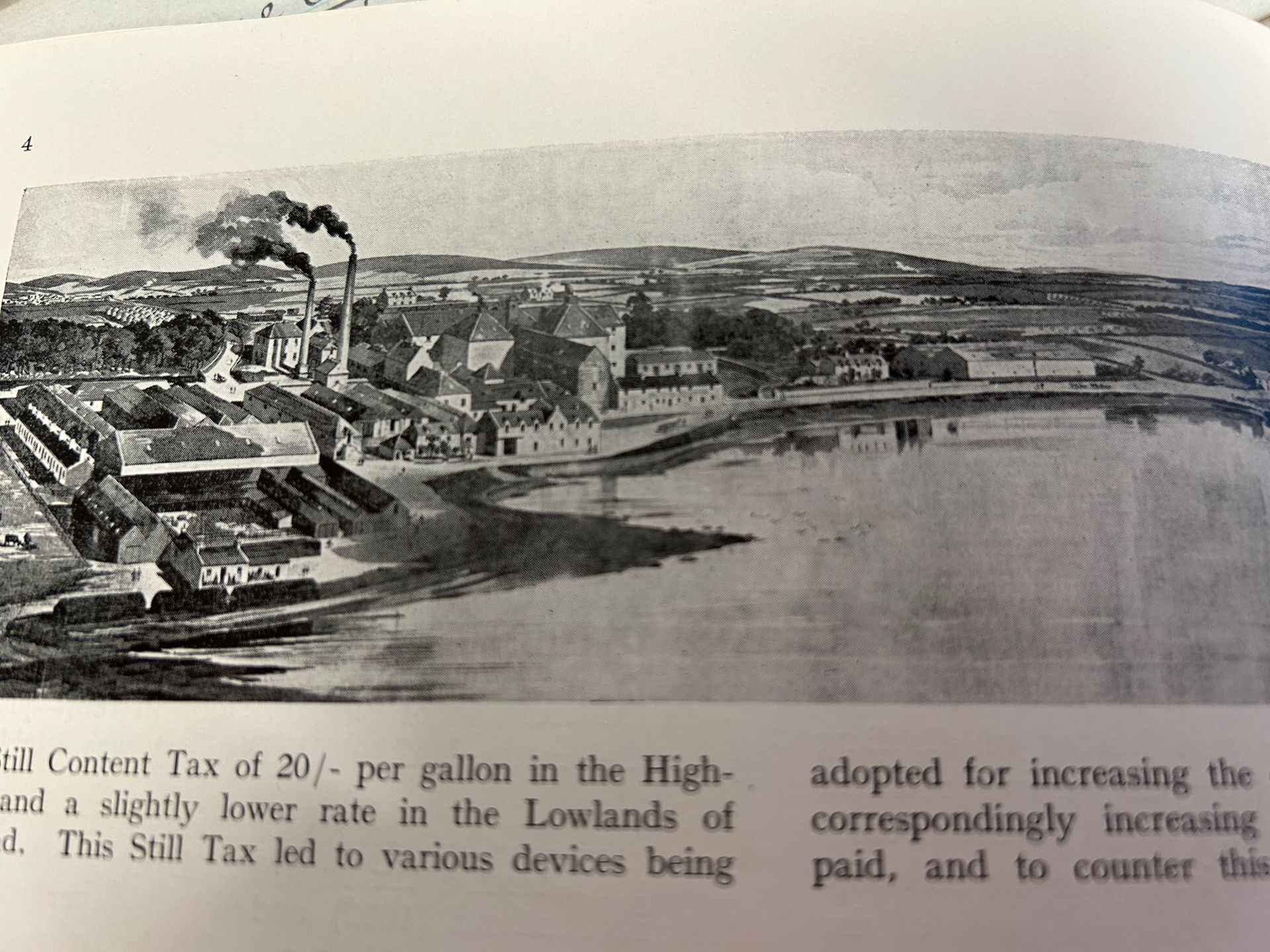
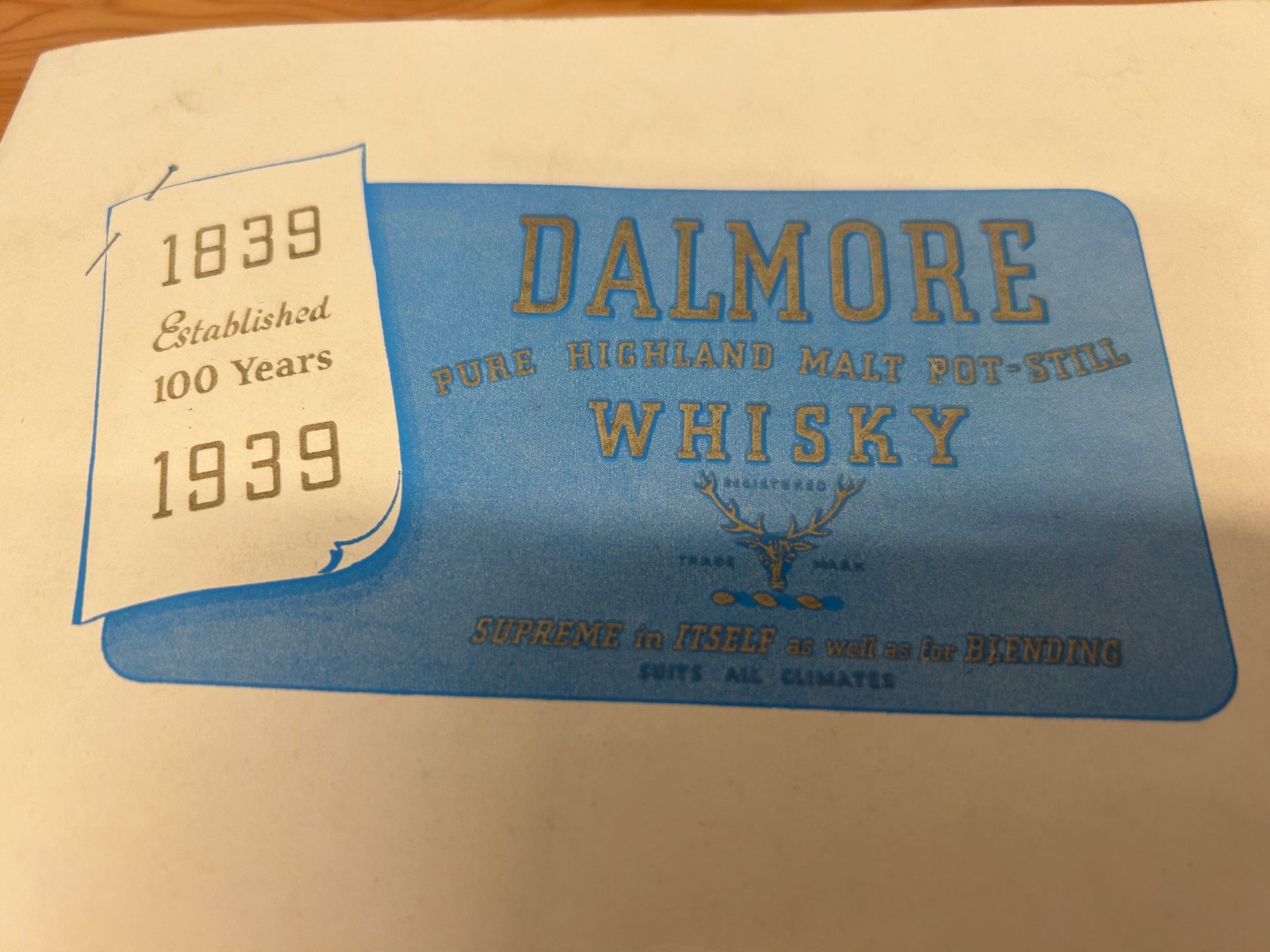
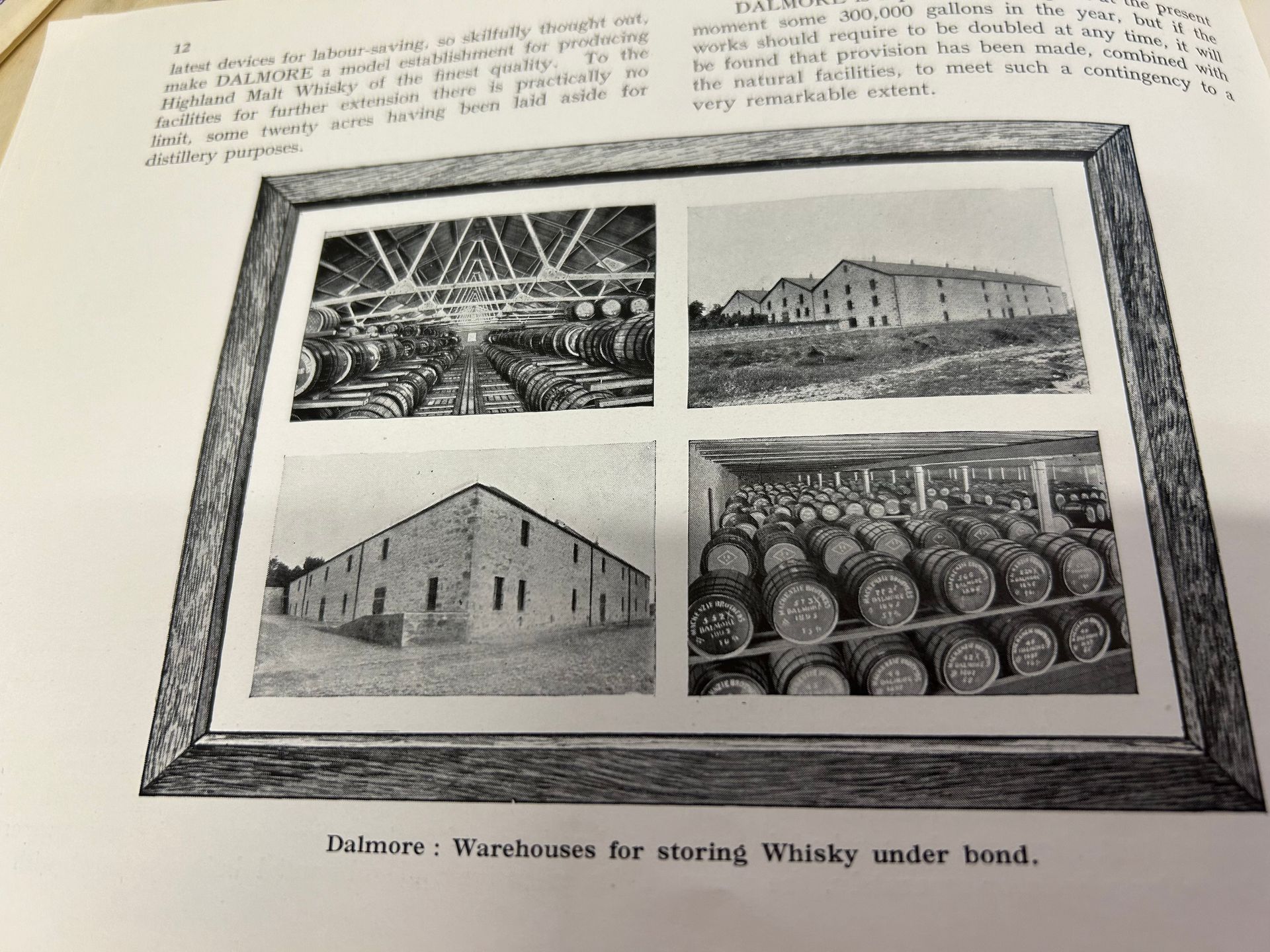
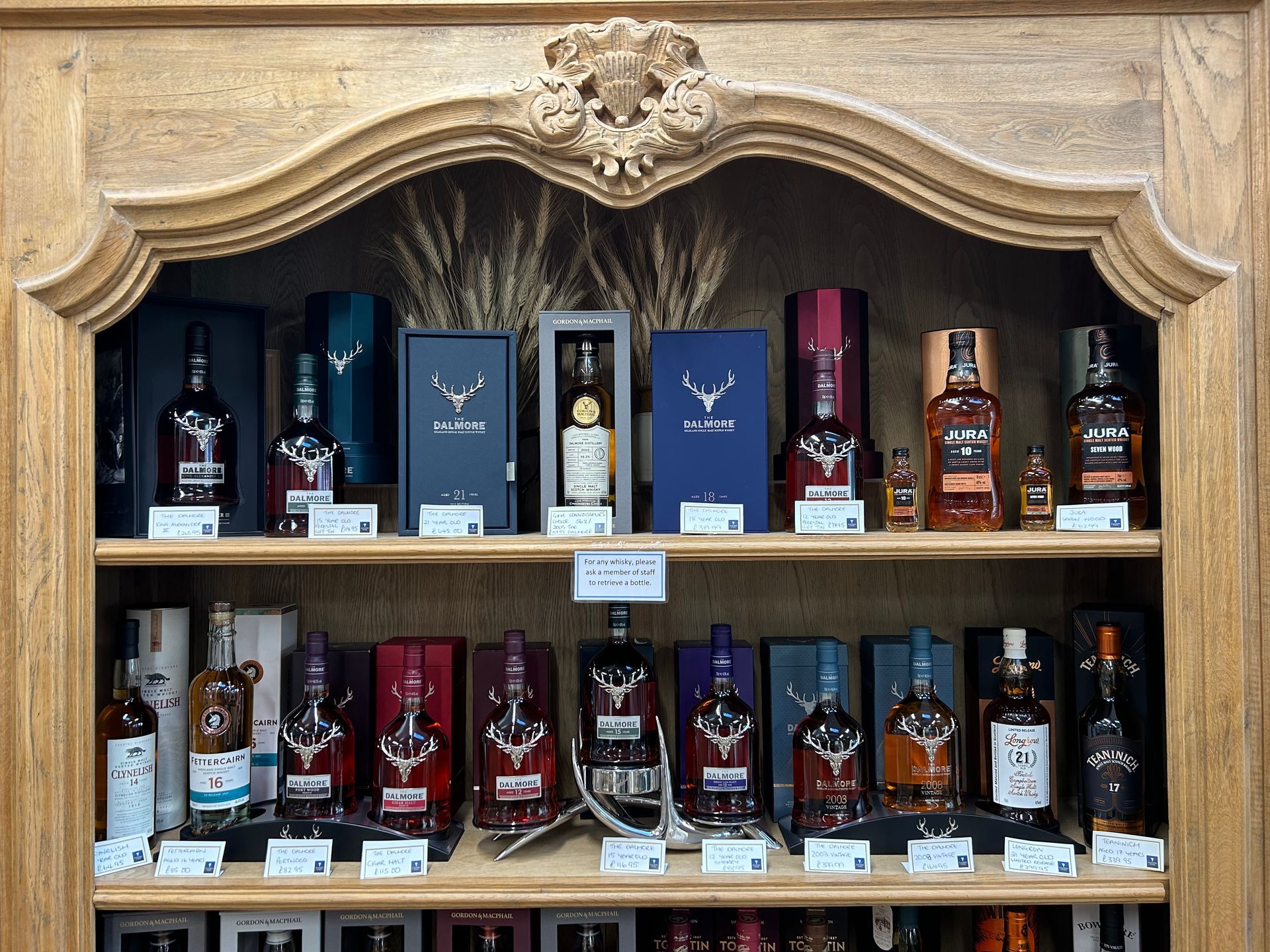
DALMORE FARM HISTORY: WEEK 7
Over the years, we have taken the responsibility of sharing our life here at Dalmore Farm very seriously. Grandad David encouraged schools and nurseries to visit the farm, beginning over 50 years ago.
Many of these visits were in the Spring with most children getting the opportunity to feed a pet lamb. During these visits, the children would get a tour around the farm with Farmer David to see all the animals, they would then sit on straw bales and have their juice and biscuit snack. Joy always provided coffee for the parents and teachers. We would love to see more pictures from these visits.
Joy was a great gardener, and the farmhouse garden was always immaculately tidy, there would be an opportunity for these school groups to visit the garden and see all the flowers. Jim Sutherland who was a great friend of David’s was the Horticultural Advisor at the College in the early 1970’s. Jim came to Dalmore and worked with Joy to design and plan the garden. The project to redesign the Farmhouse garden followed the loss of William, Joy immersed herself in tending to the garden. Jim was an alpine plant specialist and went on to own and operate his own Nursery at Ardfearn Nurseries, near Inverness. Joy had a remarkable collection of rare and unusual plants, many of which came from Jim and presents from the family. Over the years many horticultural and garden clubs came to visit her garden and enjoyed the enthusiasm and pride she had in the immaculate flower beds and perfect lawns. In the Farmhouse garden today, there are mature trees, Rhodedendrons, Azaleas, Hebes and lots of unusual plants. The lawn is banked and edged and there is a raised alpine rockery which runs along the front of the patio with varieties planted over 50 years ago.
Donnie Colhoun was the gardener at Dalmore for 42 years, he took an enormous pride in keeping the garden and grass weed free. Our family are very grateful for the support Donnie gave to Joy after David’s death. Joy and Donnie had daily discussions (usually arguments) about the method of weeding carrots or the height the grass should be cut. In fact, despite 42 years of experience she still told him daily where he was going wrong. Donnie had a huge amount of patience, and we are grateful for all he did over those many years for all of us here at the farm.
Over the years, we also provided animals to stock the mobile classroom and took animals to the local schools, this was in partnership with others including R.H.E.T. We have hosted many veterinary students here for lambing work experience and individual school pupils who showed an interest in agriculture.
When Bob Meikle was the head teacher at Alness Academy, he asked David if he could bring a lambing ewe to the school so a class of pupils could witness a lamb being born. There was a specific time scale at the school when he was expected to be there. We all thought this was an unrealistic challenge, however David must have had a word with the ewes as one was indeed obliged, and was loaded into the van and taken to the school where a healthy pair of twins were delivered.
After Grandad David passed away, the whole family were touched to receive letters and cards from people who remembered visiting the farm as children, and how kind he had been to them. Some of these people have returned to visit the farm with their own children. We decided at that time we would try our best to encourage people to visit the farm and continue David’s work to educate local children about farming.
Whilst still only a working farm we decided to take part in Open Farm Sunday in 2015. We were the only farm in Highland to take part the first year and we had an amazing 2,800 people arrive at the farm on that first Sunday. The second year in 2016, the numbers rose to over 7,000. This was an incredible success for all of us, not only were we encouraged to see how many people were interested in farming, but we could see how important it was to teach local families about agriculture and where food comes from.
During the planning for the new farm shop, we knew it would be important to have an area with farm animals for children to see. Our Children’s Farm has proved very popular, it’s lovely to see the reaction youngsters (and those not so young) have when they see the animals. We plan and incubate chicks to hatch every Easter, to coincide with the children being off on their local school holidays. Each year, we have baby chicks and ducklings in boxes inside the shop under heat lamps where visitors can see the babies up close. We find it remarkable how few people have neither seen or held a baby chick, there is nothing nicer than seeing the response and smiles this can bring to visitors in the shop. The person visiting who gets so much enjoyment from seeing the chicks can be either 2 years old or 92 years old!
In Warwick and Carolyn’s kitchen at this time of year, the table is covered with incubators. The eggs inside the incubators can all be at different stages of fertilization, all synchronised to hatch a few days ahead of the school holidays. There is nothing more fascinating than watching a chick hatch from an egg, this is something we all enjoy as a family.
Today’s Grandchildren are all very knowledgeable about hatching poultry and like to help and keep an eye on the eggs for cracks and babies emerging. Warwick’s job is keeping an eye on the moisture levels and progress by candling the eggs to check development. We try not to intervene with hatching and always allow chicks to hatch in their own time. On occasion, Carolyn can be found at the kitchen table with tweezers and a spray bottle of warm water helping a hatchling that is struggling (the kids call it an egg caesarean section!)
Having the children visit the farm has given us the opportunity to widen the breeds of animals we have here on show, this has brought us a lot of pleasure as a family.
As a way of keeping David’s legacy moving forward, we welcome classes of children from local nurseries and schools to visit the farm for free during set weeks in May and June. Following the Easter holidays through to the summer holidays, Jennie hosts groups of children and gives a tour around the farm. Farmer Jennie enjoys showing the kids around the animals, she teaches them about what we do here and where their food comes from. Some children don’t know where milk comes from, or when asked and about pork sausages, don’t know how a pork sausage is produced. Most children think milk comes from the supermarket!
It would be difficult to count the numbers of youngsters who have been on a visit to Dalmore Farm but it runs into many, many thousands.
We have tried to provide a good selection of animals for the visitors to see at the farm. We have lots of different types of chickens, ducks, geese and always have chicks at Easter. There are Pigmy goats and Boer goats, Alpacas, Donkeys, Mini-Donkeys, Valais Blacknose Sheep, Po the Highland Pony, the 2 Shetland ponies and of course the KuneKune pigs. We have big continental rabbits, mini rabbits and guinea pigs. We have also tried to include breeds of animals which are endangered and need support. Warwick has until very recently been very proud of his British Lop pigs which are on the very endangered list. We also currently have Buff Toulouse Dewlap Geese which are also very protected. Because of the recent bird flu epidemic, we have been proud to have these geese contained away from other groups to make sure the breed is getting the best chance of survival.
Today, Jennie has her own flock of Dalmore Ryeland Sheep on the farm which have a white fleece. She also has a small flock of Averon Coloured Ryeland sheep in various shades of brown fleece. We have all been delighted to see the public’s response to these at the Children’s Farm, especially with their new lambs at Easter time. This particular breed of sheep are friendly and good to work with. Jennies Grandad would be very proud of her and the responsible way she looks after all the animals here at the farm, with animal welfare top of her priorities.
There have always been dogs at Dalmore Farm, currently the resident farm dog is Jennie’s fox red Labrador called Skye who spends all day outside at the farm. Warwick has his little Maisie the Jack Russell terrier, who spends all day cuddling on the couch or keeping Warwick company out and about in the van.
Everyone who has lived in the farmhouse has always had dogs, Granny Cathy Oag had various Pekinese dogs over the years. There were of course always Collie dogs, both as pets and working dogs. One remarkable occasion was when a big handsome Collie called Sweep realised there was a bitch on heat in Salveson Crescent, her name was Lassie. Not to be stopped in the course of true love, he escaped from the farm and later a phone call was received from the frustrated lady in Salveson Crescent to tell David that the boy Collie dog Sweep had jumped up and crawled in through the partially open kitchen window. On another occasion Peter Chamberlain at Millcraig Farm, went out in the morning to open the kennel only to find a visitor. Sweep had chewed his way into a kennel to have a sleepover with the young attractive collie at Millcraig Farm, distance did not seem to be a barrier to true love.
During all the years our family have been here at Dalmore, visitors have been welcomed and offered hospitality. Many received a little too much and had sore heads to prove it. The Farmhouse was the centre of the local social life and Joy would provide everyone with beautiful food, including many recipes she had been taught while living in London. Joy was a very good cook and an extremely good baker. Roddy MacDonald the painter was always a big fan of her scones and if he was at the farm would always enjoy his tea with Joy and David. Her girdle scones and pancakes were a daily firm favourite, along with her homemade Kedgeree using a Jewish recipe. None of us can make Kedgeree the way she did, although Katie has made a good effort and possibly the best version so far.
The family all loved her home-made barbeque sauce, unfortunately she never told anyone her secret recipe and despite our best efforts, we have never found the recipe in any of her cookbooks - nor got it quite right!
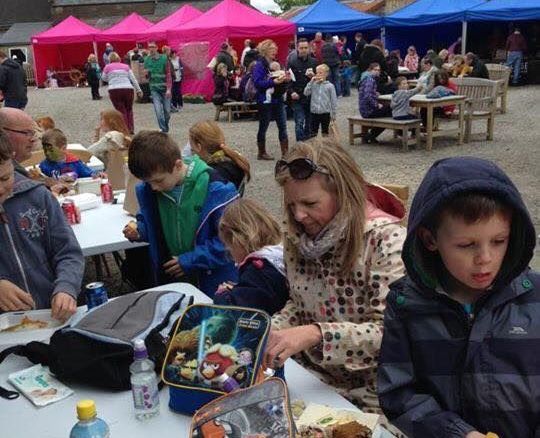
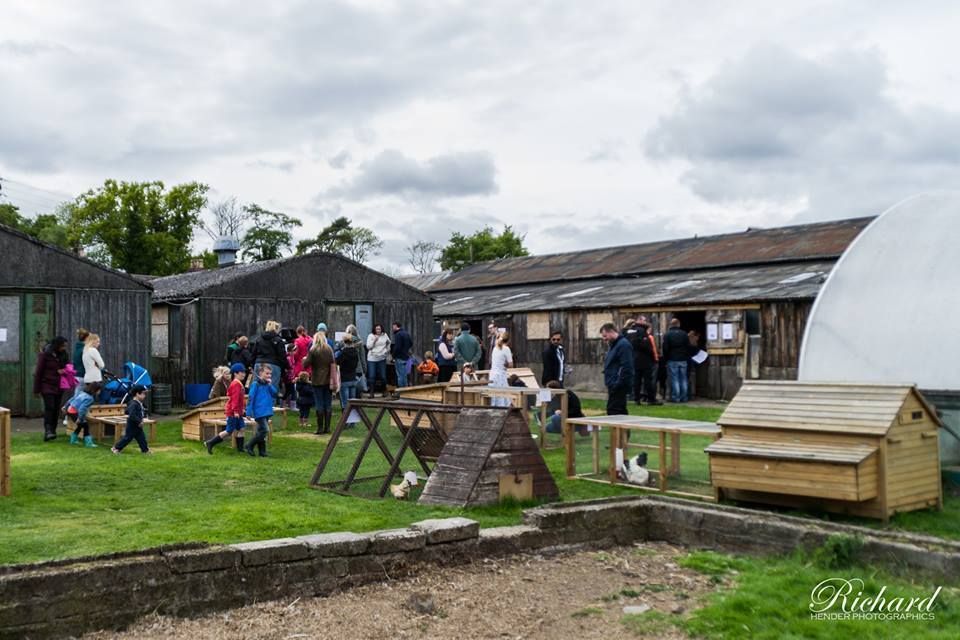
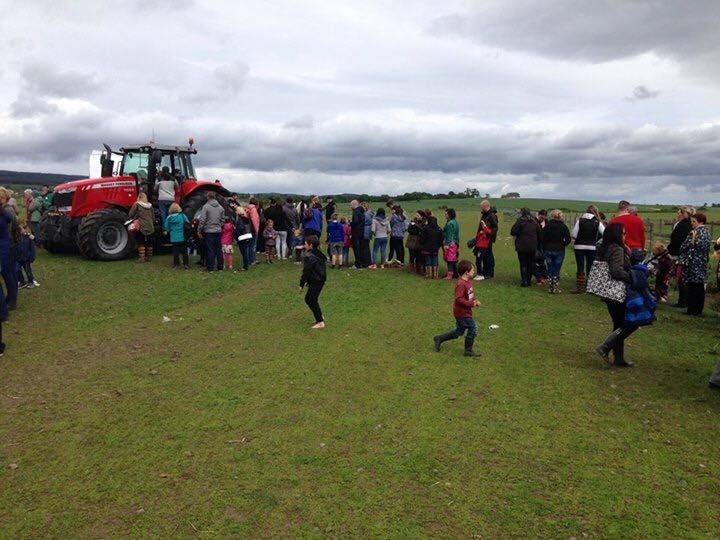
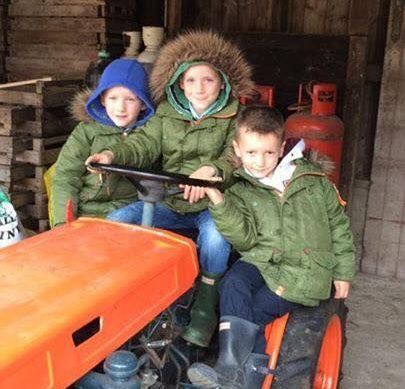
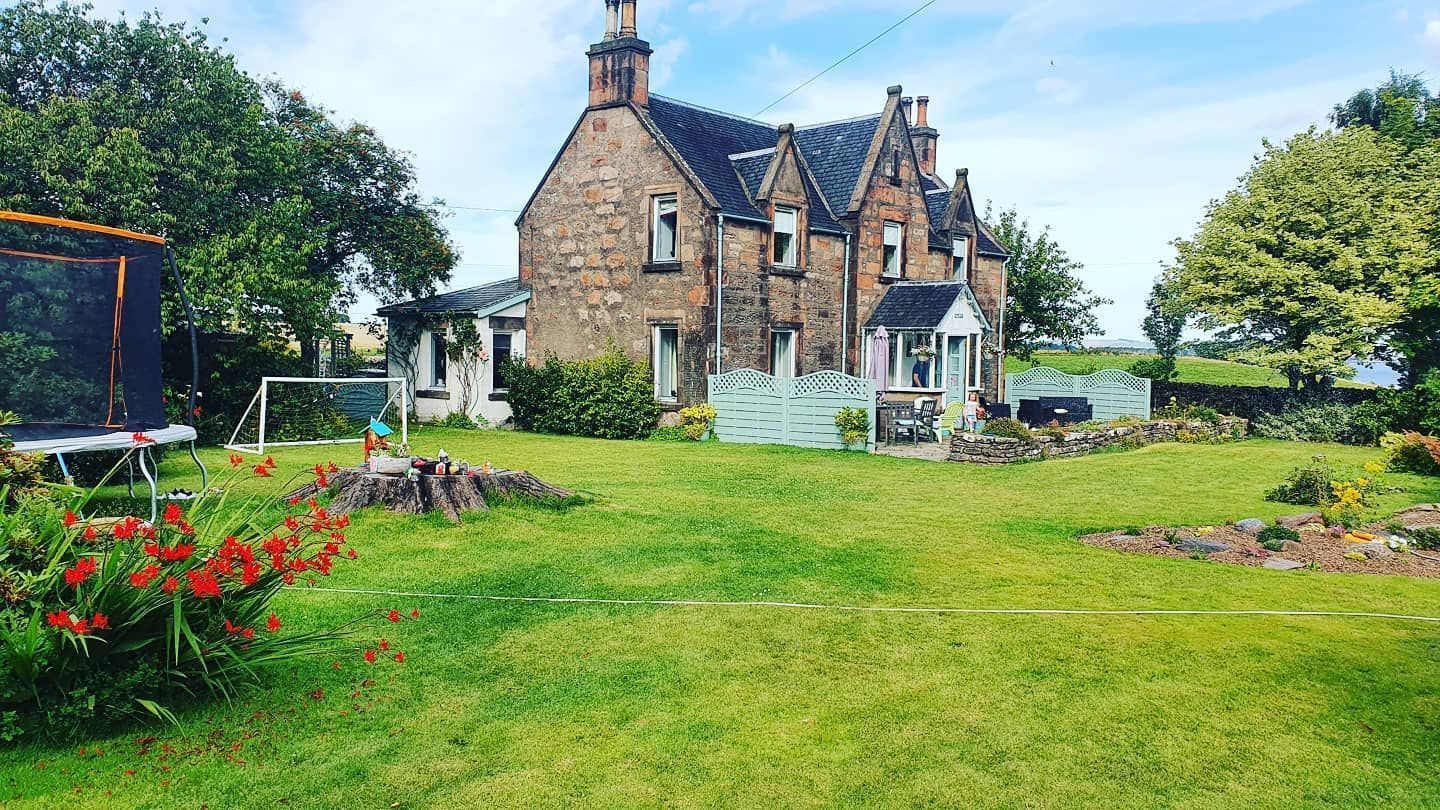
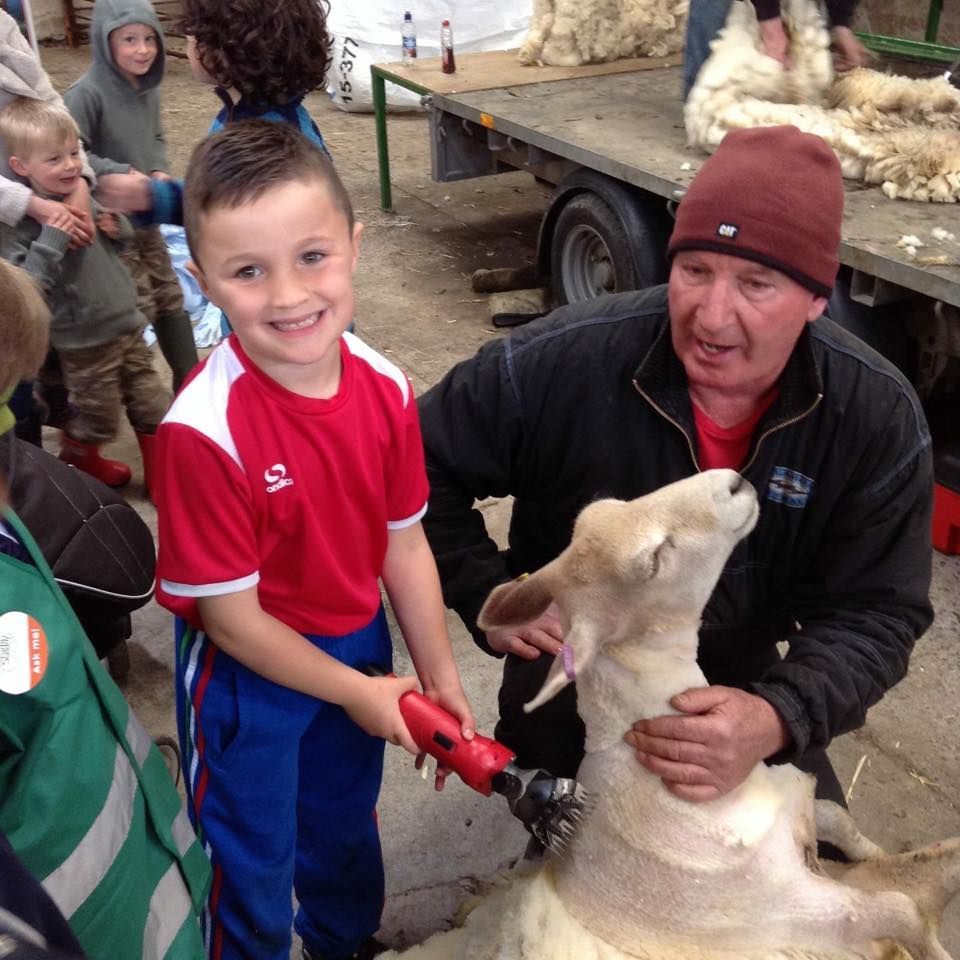
DALMORE FARM HISTORY: WEEK 8
Willie and Cathy Oag retired to live at Firthview, Station Road in Evanton, at this time their youngest son Alistair was in his final year at school. Because this was his last year, it was not worth moving him from Invergordon Academy to Dingwall Academy. Alastair had passed his driving test and drove his father’s Armstrong Sidley car to and from school to the envy of all his fellow pupils. Driving to school would have been quite unusual at this time.
Grandad Willie Oag sadly died at home at Firthview in 1969. At this time, Granny Oag really missed the animals at the farm, especially seeing the sheep and chickens. After some thought, she decided to move to The Lodge at Dalmore with Alastair. The Lodge is only a few yards from Dalmore Farm, just across the road towards Alness. The fields beside The Lodge are known as the policy fields, here she started a new flock of her beloved North Country Cheviots. She worked in partnership with Alastair, during what was intended to be her retirement. Together they produced ewe lambs which they sold successfully at the Lairg lamb sales each year. Granny Oag knew the names of all the ewes and their full pedigrees, she had a remarkable recall and had an amazing memory for all sorts of facts and figures.
Carolyn says:
I still remember the smell of the pot on the stove in The Lodge with the potato peelings on to boil, this was mixed with hen’s meal to create a steaming mixture to feed the chickens. The chickens were better looked after than many humans. She would happily tell you that she would be better off speaking to animals rather than human beings because “you get more sense from animals”. Granny Oag was a very astute businesswoman and she advised and guided those around her - you would be very sensible to listen to her advice. There were a huge number of visitors to The Lodge. Granny Oag was a wonderful hostess making people feel very welcome and offering good old fashioned Highland hospitality. She made the most amazing mince and tatties, her mashed potatoes were delicious.
She had a great friend in Mrs Rosie who worked for her while they stayed in Firthview, Mrs Rosie continued to support Cathy when she lived at The Lodge. Mrs Rosie was undoubtedly a dear friend and amazing support to Cathy.
Up to, and including the day she passed away, Granny Oag’s animals were her priority. She was out in the shed that very day helping to lamb a ewe and at the age of 86, nothing or nobody would have stopped her.
Alistair (Ali) met his future wife Fiona and they were married in 1983, later moving to Firthview with daughter Sarah, they were joined by son Ryrie in 1987. Ali died at Firthview in 2015 and Fiona still lives there to this day.
Daughter Sarah met her husband James and they have a lovely family including their two girls and grandchildren, James and Sarah still live in Evanton. Ryrie enjoyed helping at The Lodge as a small child and showed an early interest in tractors, animals and outdoor life. Ryrie has a successful career in Inverness and lives with his partner Innes.
We keep in touch with Fiona, Sarah and Ryrie and regularly see Fiona when she is in for coffee and cake at the new farm shop and restaurant with her friends.
It seems inevitable, being on the edge of a growing community that land would be required for development. Over the years there have been many changes to the fields and farming land, in and around Dalmore.
In the 1970s, there was a compulsory purchase order made for the land where Alness Academy now stands, at this time an area of our land was sold to occupy the new school. The new Alness Academy was a massive improvement for the young people of Alness, having previously been travelling to Invergordon daily by bus.
The original 1970s school and sports complex was replaced in 2020 with a brand new building, on what was the original playing fields and football pitches. The site of the 1970’s Academy has now been replaced with the best quality 5G football pitches and outdoor sports areas. Local football team Alness United use this sports facility as their home, this area is named Dalmore Park.
The first Rector at Alness Academy in the 1970s was Mr Bob Meikle. David Oag and Mr Meikle were to become very close and dear friends. David supported the school in many ways, always making himself available and helping groups and classes where he could. Bob and David had a common interest in Robert Burns and shared many nights entertaining others. One of their annual outings was their trip to the Strathpeffer Burns Club with Hughie Mackenzie and the Rector of Invergordon Academy Mr John MacMillan. They would enjoy their evening at Strathpeffer and arrive back at Hughie’s home at Eastdene, Dalmore Road. Hughie’s wife Joey would be waiting up with their “supper”, this could have been well after midnight. David was always in demand to entertain at all sorts of events, he was an accomplished after dinner speaker and would sing Scottish songs and ballads without notes, and without any hesitation.
In 1975, Highland Fabricators wanted to establish a social club for the workers from their yard at Nigg. This new club needed to be near both Alness and Invergordon. Highland Fabricators approached the family and the Hi-Fab Club was to be built right beside the railway near to Alness, which would be walking distance for many of its loyal customers. There are many, many customers who will tell you stories about the antics which took place in the Hi-Fab Club. As time went on the and work at the Nigg Yard declined, the Hi-Fab club then became the famous Dalmore Hotel. The hospitality offered by Anne and Fachie MacRae was legendary. Many events, dances, parties, darts competitions and football matches were enjoyed at The Dalmore Hotel and sports field, including Katie’s 7th Birthday party.
David could often be found holding court in the bar, he was often joined by his collie dog Sweep who would track him down. Anne was very welcoming towards Sweep, the Collie dog knew where to go to get spoiled.
Sunday lunch is still remembered fondly by locals. Anne’s homemade soups, egg mayonnaise (with the egg cut in half and sprinkled with paprika), basket suppers and roast beef followed by homemade traditional puddings. While writing this, we all reminisced about the banana split for dessert!
The Dalmore Hotel closed in the late 90s and following this unfortunately became derelict for a few years. With the growth in the area, there was a need for a larger supermarket on the edge of the town. The site of the Dalmore Hotel was identified as being suitable for a new supermarket and the company who owned it accepted an offer. Safeway opened in 2000, this was later bought over by Morrisons as we know it now.
Following the tragic death of William in 1969, the following year in 1970 another child Judy Hickman was knocked down and killed just a short distance from the farm entrance. At this time, the Oag family offered Ross and Cromarty District Council the land which runs along the front of our fields, parallel to the Shore Road. This was a very important decision made by David and Joy, the family were delighted the Council accepted this offer to create a safe walking space for pedestrians.
In 2012, The Alness Initiative Group gained funding to purchase land from The Gill Family at Rosskeen Farm, to further the path to Invergordon from Dalmore. When completing the project, there was not sufficient money to purchase the land from Bellport House up to meet the path at Dalmore, so our family gifted the land required to complete the path. Pedestrians and cyclists now have a continuous safe route from Evanton right through to Invergordon.
With the growth in traffic on the A9, in 1987 there was a need for serious road upgrading. The only way for traffic getting North or South at this time was either by the Struie Road through Bonar Bridge, or round the shore past Invergordon, Kildary and up past Tain. The construction of the A9 was to become a massive project which effectively cut our farm in two halves. The groundwork involved a huge undertaking and caused a great deal of upheaval for all the farms involved locally in the project. Many of the old buildings on the East side of the farm which had been previously built and used during the war, had to be demolished. This new road changed the landscape for everyone locally. The new flyover bridge was a challenging project, mainly because our farm is so close to the Cromarty Firth, our ground is virtually pure sand subsoil which made the bridge work complicated and difficult.
The resulting road North and South would be a complete lifechanging improvement for all those who travel this route. It changed the dynamics of Dalmore Farm forever. Stock and tractors now have to use an underpass to get from one side of the farm to the other. Our farm is also divided by the North Highland railway line which also cuts through the farm. The railway line and road cross at the same point, here we have a double underpass with the A9 running over the top.
In recent years, land was sought locally for extra housing. Ali was approached and the policy fields behind The Lodge were bought for social housing. Many families now live in the newly built, high quality properties at the East side of the farm. To date there is still building works taking place and new housing being released. One of the new streets was named David Oag Grove, in recognition of the work the David had done over many years for the community. As a family we were very touched that the local Community Council felt this was an appropriate way to honour David’s memory.
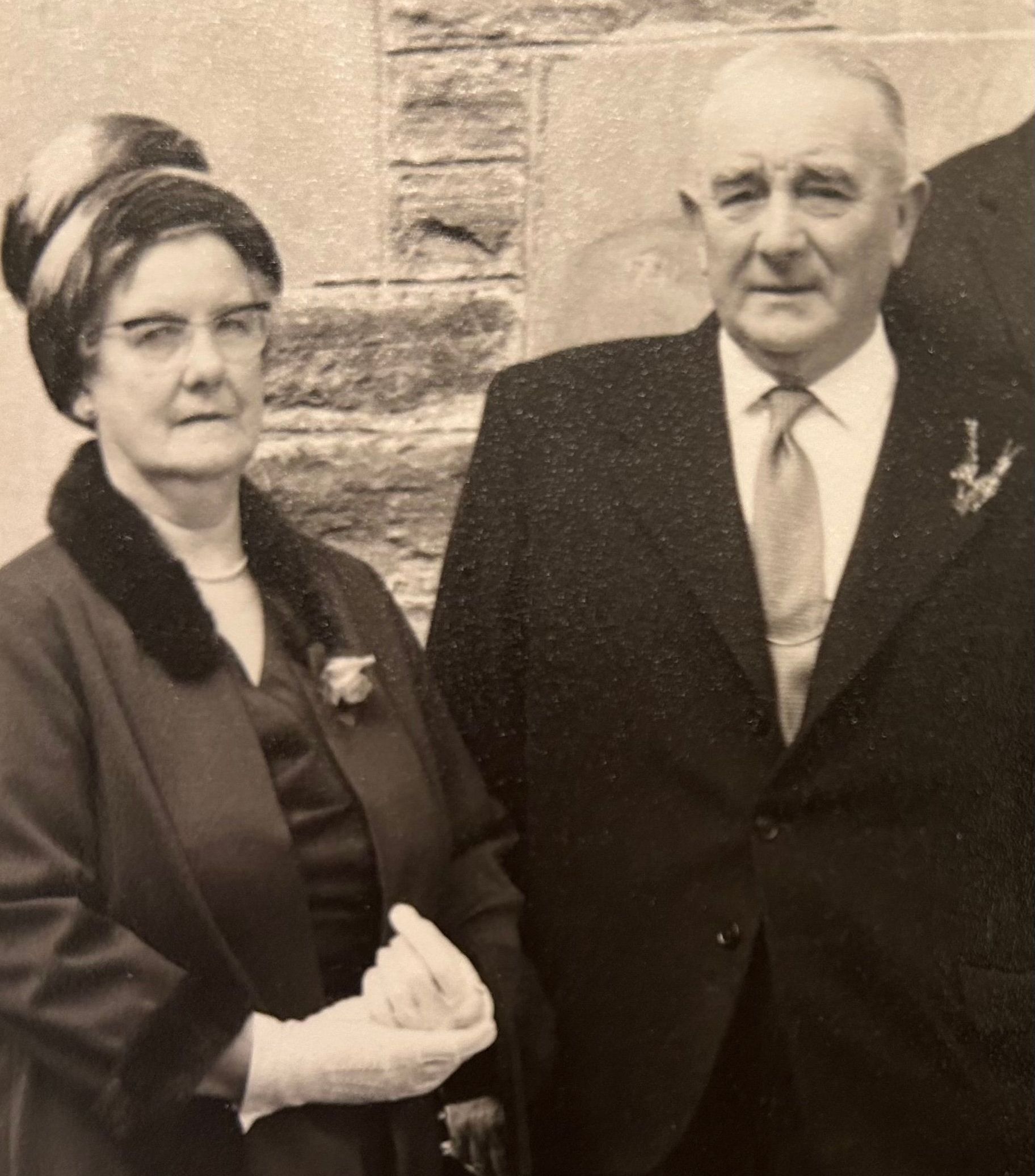
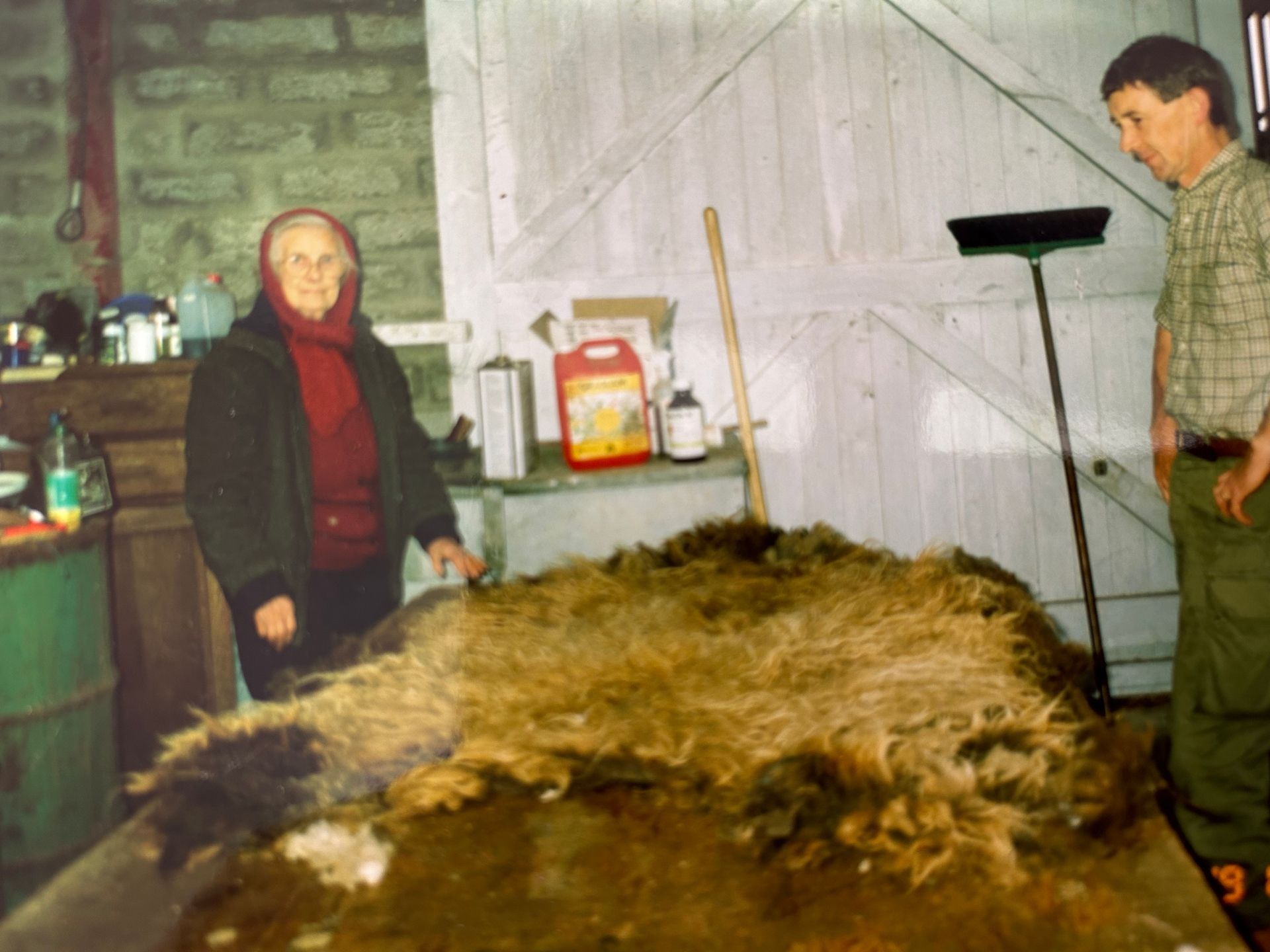
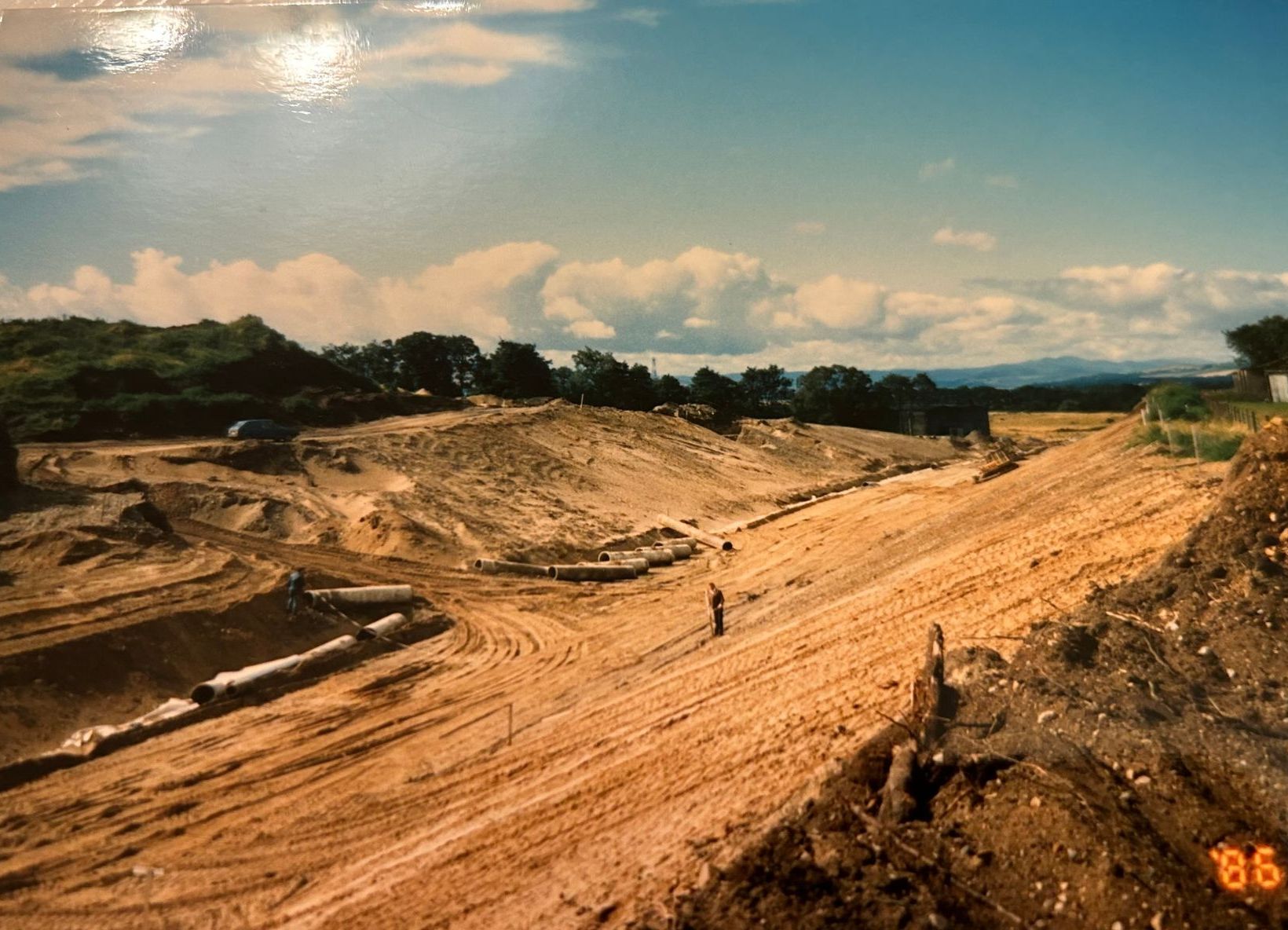
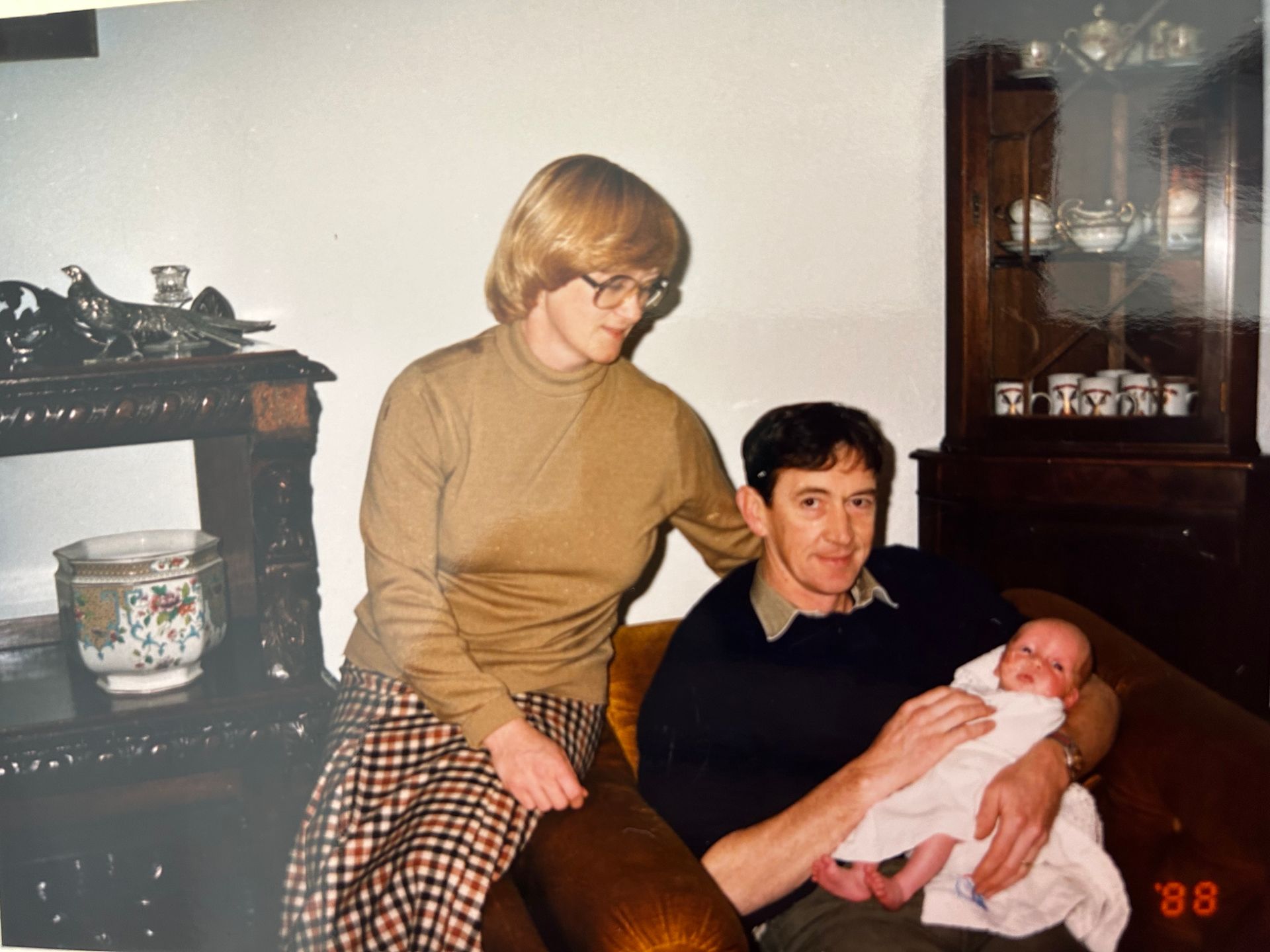
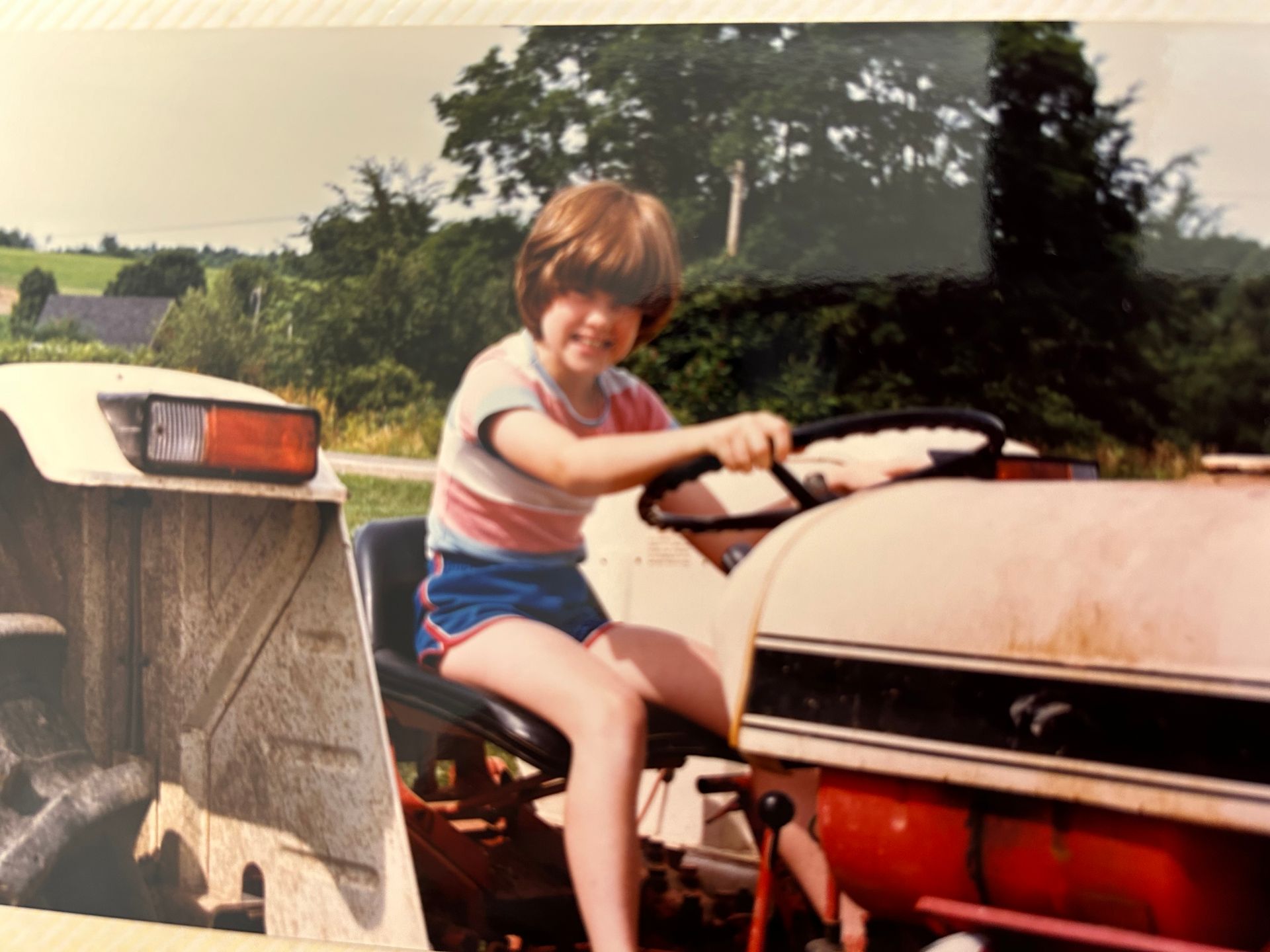
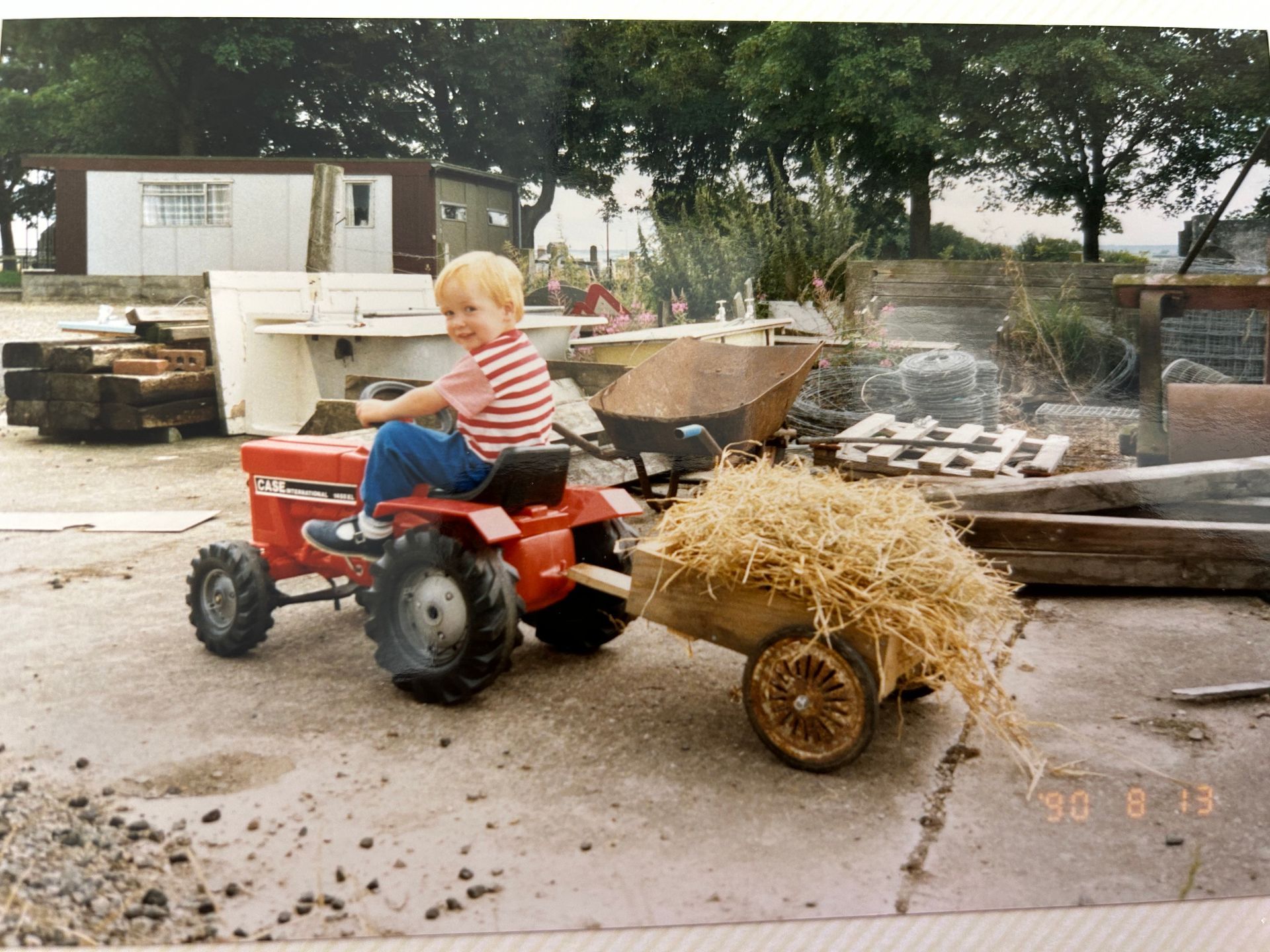
DALMORE FARM HISTORY: WEEK 9
Willie and Cathy Oag had two daughters, the oldest of these was Sheena who spent the last part of her secondary education in St. Brides in Helensburgh. Returning to Dalmore Farm from school, she made the decision to take up work as a Nanny. Sheena worked with a family in Edinburgh and was then was offered a position in Montreal and made the move to Canada. Here Sheena had her three daughters Sheila, Shona and Sherri. Returning to Scotland in 1968 with the girls, Sheena set up home once again at Dalmore and the girls settled into life here in Scotland. Sheena then met George Burns and later moved to Ordiquil in Banffshire. Sheena and George were married in Banff registry office and during their time at Ordiguil, their son Seoras was born. Sheena and George then moved to Southport where Seoras was able to attend a school for the deaf. Following their time in Southport, the family moved North and lived in the flat above The Royal Bank of Scotland in the High Street, Alness for a time. Their last move would be to return to Dalmore where they both spent the last part of their lives living at The Lodge.
Sheila was the younger daughter of Willie and Cathy, Sheila spent all her education at home and was great pals with her brother Alistair who was three years younger than her. After leaving school, Sheila went onto College in Aberdeen, then returned to live at home and take up employment locally. During a trip to Edinburgh, Cathy and Sheila delivered a wedding gift to a family friend. On this trip with her mother, Sheila would meet Jimmy Hoseason who worked as a policeman in Edinburgh. Following their courtship they were later married in Strathpeffer. Shelia and Jimmy lived together at Danderhall near Edinburgh where their first daughter Mandy was born. The family of three moved North to run the newsagents in Evanton for a time, it was here that second child Alan joined the family. Jimmy then decided to go back to college in Glasgow to study Community Education. Following the move back to Edinburgh, it was here that their third child Jill was born. The family stayed in Edinburgh for three years while Jimmy gained experience in his newly chosen career. An opportunity then arose to relocate back north, and having decided to make the move, the family of five relocated to Belleport House, Dalmore. Jimmy was to eventually take up a position in the Community Education Unit covering the Invergordon and Alness area. Jimmy was very active, popular and was highly regarded locally. Sheila was to become a very much respected and valuable member of the staff at the Invergordon medical centre where she worked until she retired.
Following the couple’s retirement, they moved to Findhorn on the East coast. Jimmy and two of his friends founded the Findhorn Village Arts Group. Jimmy has now sadly passed away, but Sheila still lives there Nineteen years later. Sheila and Jimmy have eight beautiful Grandchildren.
Since 1944, from the very earliest days when milk was being delivered to the R.A.F. camp, the family has always enjoyed a good relationship with those that worked and lived in Alness. Through the connection with the R.A.F, David was always willing to help, and would be happy to step in to provide a tractor and trailer, or a helping hand when required. A great social life was enjoyed by those who moved to Alness, especially those who moved here in the 1970’s and 1980’s to further their careers. The Seargent’s mess was the centre of all social life. A great deal of long-term friendships were made between the service men and women and the locals in our community. Those who were working and living at the camp made great connections with local families. We found some lovely photos and mementos of some of the social occasions, burns suppers and many events.
Many of these service personnel chose to stay in Alness and the surrounding area, and in fact some married into local families and have brought their children up in the area. David was always on hand to support and participate in organizing of these social events, often guiding those from south of the border on the ways of Highland hospitality.
Over the years at Dalmore Farm there has always been an interest in cars and engineering. Grandad David always had a keen interest in Motorsport and owned some special cars back in his day, his favourite car being a blue Opel Manta GTE.
When Warwick came to Dalmore in the early 80’s he started driving in forest stage rallies in an red and white left hand drive Toyota Starlet. This was a great deal of fun and he enjoyed an amount of success across many rallies throughout Scotland. Warwick was driving during the period of time when Jimmy Macrae was successful on the Rally scene.
It was interesting for us to learn about Alastair in the U.S.A. and his driving experience. Ali used to go to the racing with his father Hugh, and at the age of 28 got behind the wheel of his own race car. Father Hugh backed Ali all the way helping him make a name for himself in the professional sport. Ali used the Dalmore Farm name as the main sponsor. They maintained the car themselves, having the knowledge and expertise to do this. Ali had good success over the years while competing, and went onto to open his own garage preparing engines and parts for racing cars. Ali has a great reputation for doing an incredibly good job and we have heard has an immaculate garage.
The next generation joined the club when David Wilson at the age of 18 got behind the wheel. Over the years David has had a great deal of success in different cars, he has always been supported in preparing his vehicles here at Dalmore by Dad Warwick. David has received many awards as a young driver and was fortunate to compete against a great bunch of drivers who have encouraged him and enjoyed his committed style of driving. David can always be relied upon to entertain the spectators, David always has the gravel flying. Everyone here at Dalmore is very proud of his achievements. David builds and prepares his cars himself in our old byre building, now affectionately renamed “Barn Engineering”. Grandad David and Joy were very proud of his results and always supported his trips away to compete.
David has won many awards in his time behind the wheel so far, including winning the first ever 'If in doubt, flat out!" award. He was presented with this award by Jimmy Macrae at an awards ceremony in Glasgow. David was then chosen to participate in a rally team alongside the Macrae family, which raised funds in memory of Colin Macrae. Colin was the best rally driver of his generation, known worldwide for his incredicle driving ability, and was always a great inspiration to David. Sadly Colin tragically died in a helicopter accident along with his young son in 2007.
In 2004, Grandad David and Carolyn were south at a family funeral when Carolyn received a phone call to say that there was a fire a blaze at the farm. Having taken the phone call, they headed straight home from the central belt, not really aware at this time how serious the fire was. Nothing could have prepared David and Carolyn for how quickly the fire took hold, nor the damage they arrived to on their return. Once the hay in the first barn caught fire there was no stopping it, and despite the very best efforts of the dedicated fire crews locally, it wasn’t long before many of the farm buildings were well alight. The wood in the Victorian steading was pitch pine and bone dry, the grain bins were full of barley and the barn wwre full of dry straw. The animals were all saved but there was considerable damage to the buildings. It took well over a week for the Invergordon fire crews to get the fire completely extinguished. The Fire Brigade believed the fire started in the back corner of the hay barn. Lots of people at that time would walk from Alness to Invergordon at night along the Shore Road, and it’s believed someone may have been sheltering from the heavy rain that night and had perhaps been smoking.
The shock of the fire was difficult for David and Joy to cope with, and at this time David was already suffering a decline in his health. David struggled in particular with the visable damage to the beautiful sandstone buildings and resulting changes to the future farming life at Dalmore. We are all sure David never really recovered following the fire and there was a serious deterioration in his health from this point on.

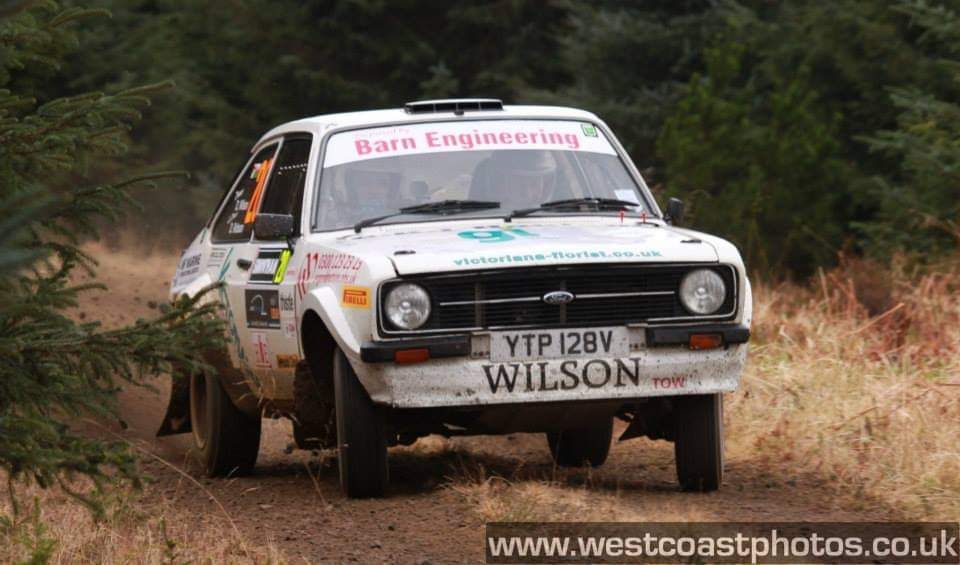

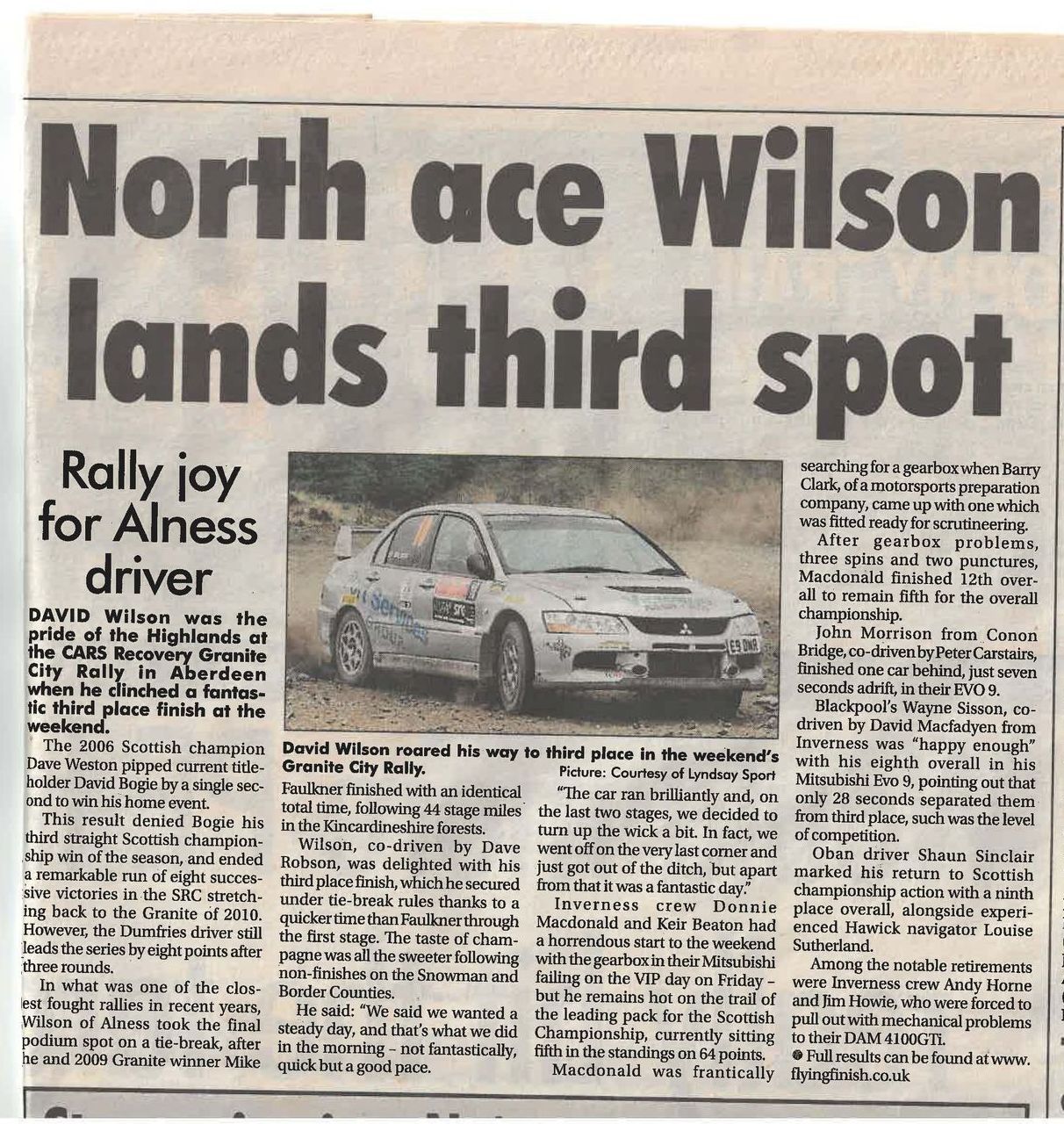
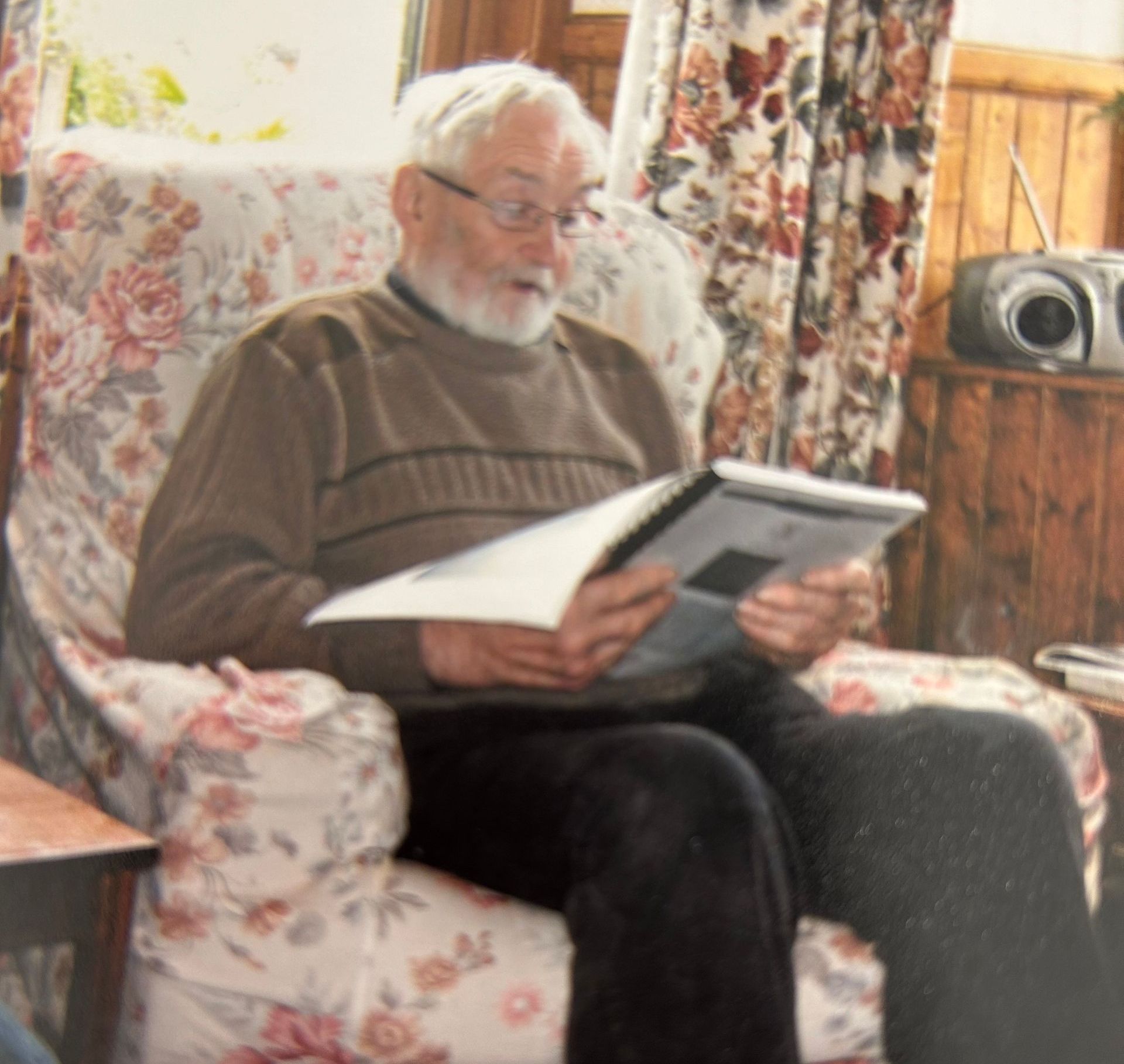
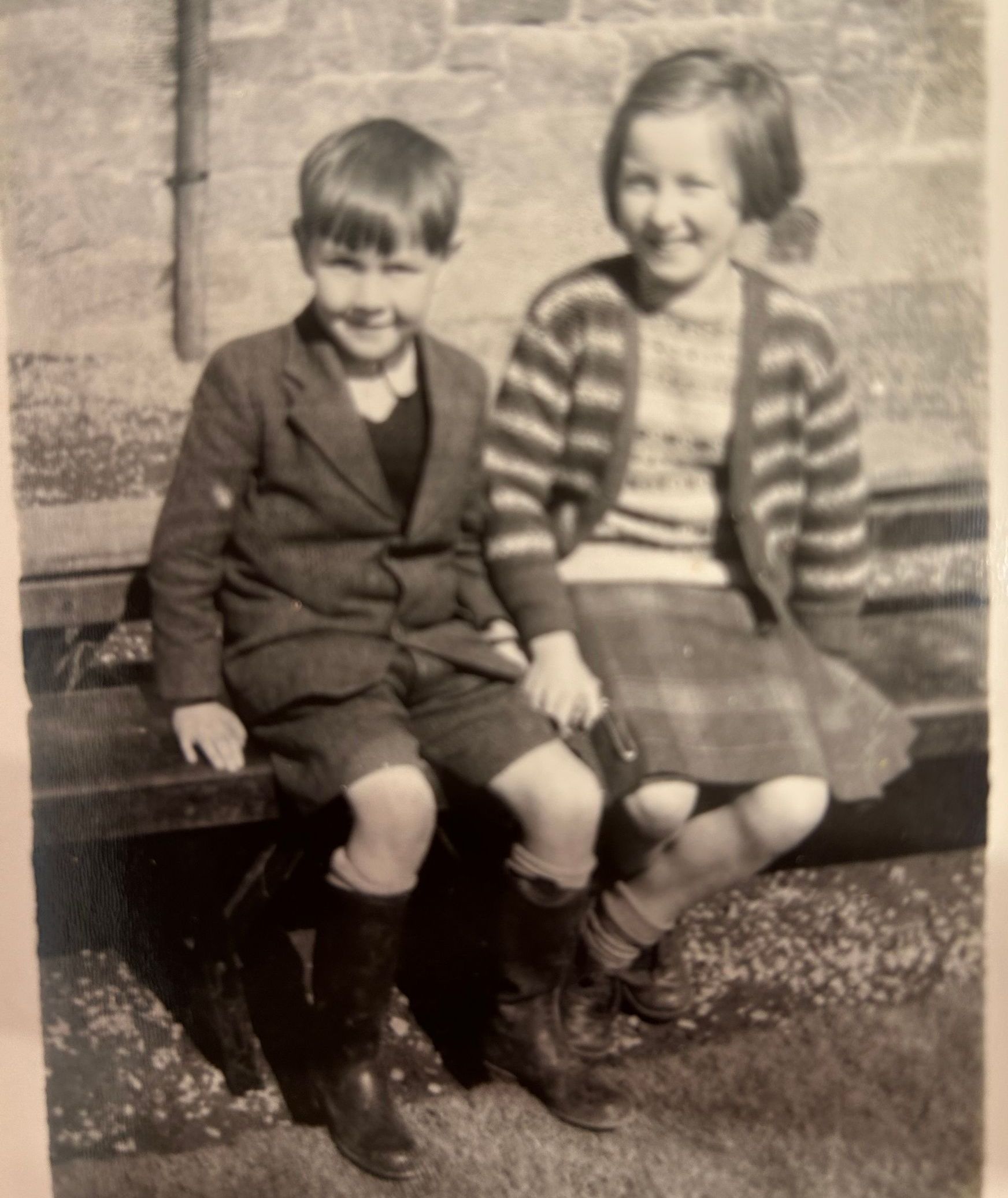
DALMORE FARM HISTORY: WEEK 10
Following the tragic death of David and Joy’s son William, life at Dalmore Farm changed at that point for the foreseeable future. This loss in 1969, when William was only 10 was devastating for David and Joy. Any parent would struggle to cope with a tragedy such as this and life was particularly difficult for Joy. Joy became totally focused on life within only the farm grounds and farmhouse, from this point on she very rarely left the farm or attended many social events. David meanwhile, had to get on with the daily work of running the farm and David did all the shopping and daily jobs for Joy. The death of William had a profound effect on both David and Joy and this loss would always be in the background as life moved forward.
From the age of 12, Carolyn grew up at Dalmore Farm under the tremendous burden of being the only remaining child. At fifteen years old Carolyn joined Mid Ross Young Farmers and took part in speech making, being coached by the then Auctioneer George Tait. Carolyn enjoyed this and as a junior member was asked to fill the remaining space in the club’s second senior team “to make up the numbers”. This team included Jim Whiteford, Stuart Williams and Hugh MacIntosh, all senior members. The Team not only won the area competition but went on to successfully compete nationally, Carolyn winning an award for the best speaker under the age of 21, she was just 15. The experience gained would be something that would stay with her and would be called on many occasions in the future.
Life at Dalmore for Carolyn was particularly difficult, and after leaving Invergordon Academy, Carolyn went to work in Aberdeen for a large oil company. This was a very exciting time in Aberdeen as oil was only newly discovered and being drilled in the North Sea. Aberdeen was a boom City and there was much to do and be involved in. Carolyn was employed by Baker Oil Tools and Tri State Oil Tools. These two large international companies gave an opportunity an 18 year old, jobs like this were not available in the Highlands at that time.
Carolyn joined Aberdeenshire based Udny Young Farmers and enjoyed the social life that came with being part of a particularly active club. One of these events was a team quiz competition located in an Aberdeen Agricultural building, this was where she met Warwick Wilson for the first time. Warwick was there with his good friends Charlie Ryrie and James Polson, the boys were all from farms in Caithness and members of Bower Young Farmers.
Following this first encounter, Warwick asked Carolyn on their first date. They met up at the Orkney Show where Carolyn’s father David was there to judge sheep classes. Warwick was there with a blonde Swedish exchange student, not the best first impression and he spent most of the day participating in the local brew. Warwick’s excuse for disappearing was, it was a wet day and the only place for cover was the beer tent. The young couple met again a few weeks later at the Dornoch show, Carolyn had a puncture on the horsebox she was driving, Warwick and the boys came to her rescue.
Carolyn later went on a planned trip to Caithness to visit relatives in Thurso and the pair met up again, one thing led to another and they were engaged very shortly afterwards. Six months later, in June 1979, Warwick and Carolyn were married in Rosskeen Church in Alness, their reception was help in the new Averon Centre. The newly weds first lived in Caithness where Warwick worked for the next two years. During this time Carolyn worked at the Caithness Glass factory, and later at the Government Buildings in Wick.
The couple moved south to Dalmore in 1981 and set up home in their cottage where they have lived very happily since, for nearly 45 years.
In January 1983 Kathryn Anne (Katie) was born, Jennifer Louise (Jennie) was born in March 1985 then surprise baby David Warwick was born which completed the family in March 1988.
All three children enjoyed the farming life from a very early age. They could always be found on tractors, helping lamb ewes at lambing time, shifting sheep about the farm and any other activity they could get involved in. Dalmore Farm was a very happy place for the children to grow up, the children had lots of wonderful adventures and they got many opportunities.
Katie has always been interested in cars and driving, at the age of 10 she was able to drive the old red Renault Extra van in the fields. At the age of 17, she helped her Dad transplant a VW Golf GTI engine into her much slower diesel Seat Ibiza, and also enjoyed time on the track at Knockhill Racing Circuit.
At lambing time, having Katie as a driver to move an individual ewe and lambs back to the farm was very handy. The back doors of the old red van were tied shut with farmer’s favourite - some old red baler twine. The passenger door would never close properly, it would always bounce off the catch, so the kids devised their own closure. They put a line of twine out the window, then wind the window up until it would catch on the knot at the end. The children also had a very well rehearsed system for catching sheep, this involved Katie driving up slowly alongside the chosen ewe, then Jennie and David jumping out and rugby tackling the sheep to the ground. This is definitely not in line with today’s Health and Safety, but never the less it was very effective at the time.
Jennie has always enjoyed working with animals, she has always been the very patient one who would spend time sitting feeding a lamb or orphan piglets. She also inherited her Grandad’s great love of horses.
David was always considered by his sisters to be the “golden child”, he was undoubtedly his Grandmother’s favourite. When David came home from school each day at 3pm, she would have his freshly made pancakes or a fried egg roll, along with his cup of coffee ready on the farmhouse table.
When David left school he wanted to drive a JCB, but being only 17 at the time, he needed to pass a test to make sure he was competent. This test was quite expensive, but he was encouraged to go for the two week training course prior to sitting the test. Having passed the test with flying colours, David was soon offered a job at Serimax in Evanton where he worked for nearly nine months on constant night shift. He saved all his wages and paid back the money for the training course. At the end of that year David had saved enough to put down a deposit on his own new JCB 3CX. JCB as a company were very impressed with David’s determination and made a film about him to encourage other youngsters to buy their own machines and set up their own business. David worked with his JCB locally on several big housing projects including working for Springfield Homes when they built The Paddock development in Alness.
David then decided to go to Australia for a year with his friend Michael Ewan. When David was preparing for the trip, Katie helped him prepare his CV where she made a list of the machinery he had experience of driving. It was perhaps not clear from the information she provided that he had only driven the “Britain’s model” on the sitting room carpet at the age of 4 and not the real thing. Australia proved to be a wonderful adventure and David enjoyed the opportunity to work on some amazing real machinery on Australian farms. David would send home pictures of the massive machines he was working on. On his return to the UK, David decided he wanted to farm himself at Dalmore and as a family, we all encouraged him to do this.
Our main crops today are Spring barley for malting, oats and potatoes which are grown by a neighbouring farmer on land that we rent to them.
Today, Katie can mostly be found in the office looking after all our company accounts and VAT, our correspondence and marketing, employment and HR, along with anything else office based, she doesn't often get her wellies dirty!
Jennie splits her time between the outdoor areas looking after the animals and covering hours in the kitchen. Jennie is a brilliant cook and has spent time running the kitchen, covering for our chef when he off.
Warwick and Carolyn now have 7 grandchildren. Katie has three children, Jamie (16), Adam (14) and Lucy (11). Jennie has two children, Kieran (16) and Aimee (8). David has his two daughters Alba (6) and Perrie (2).
